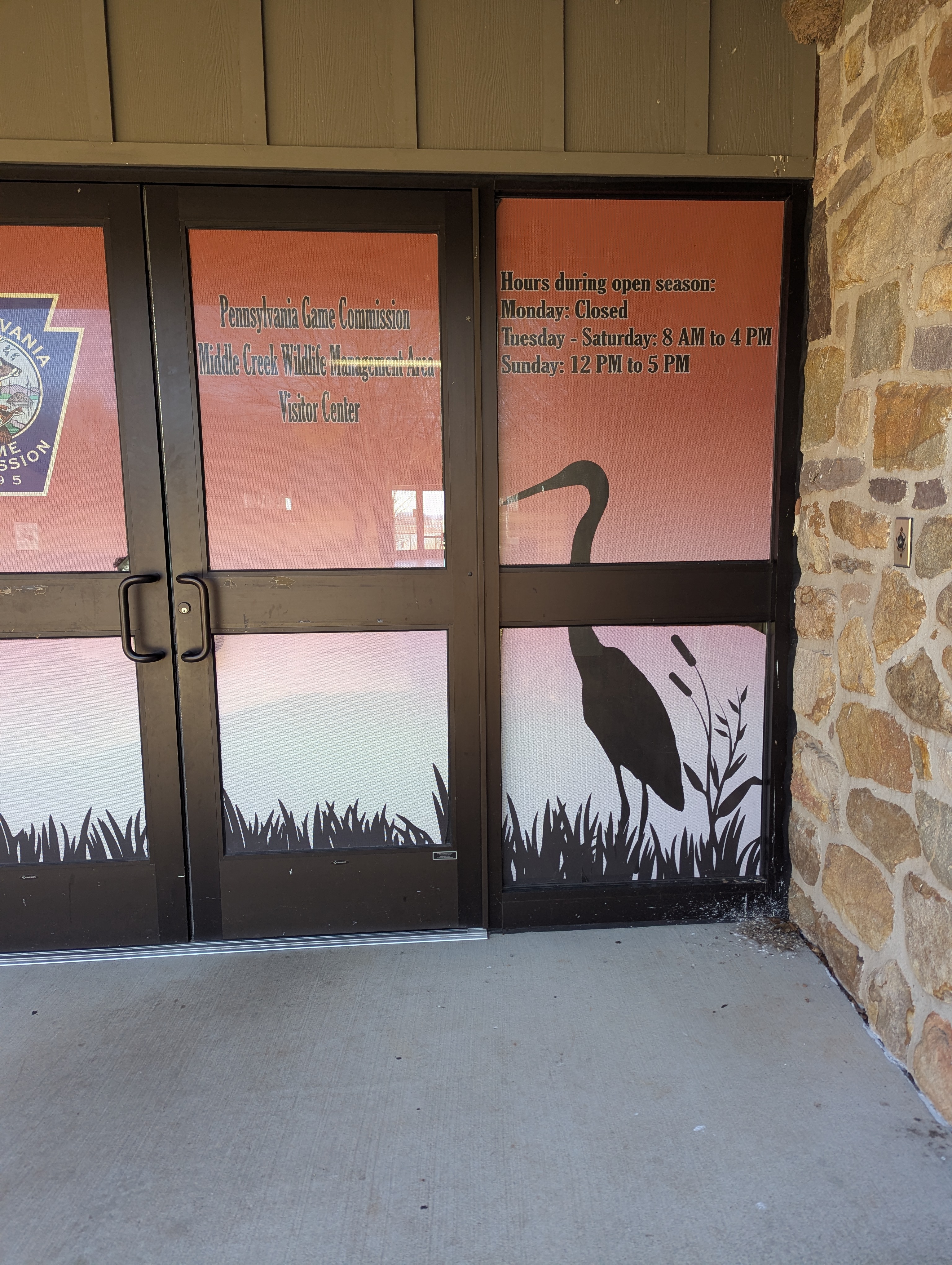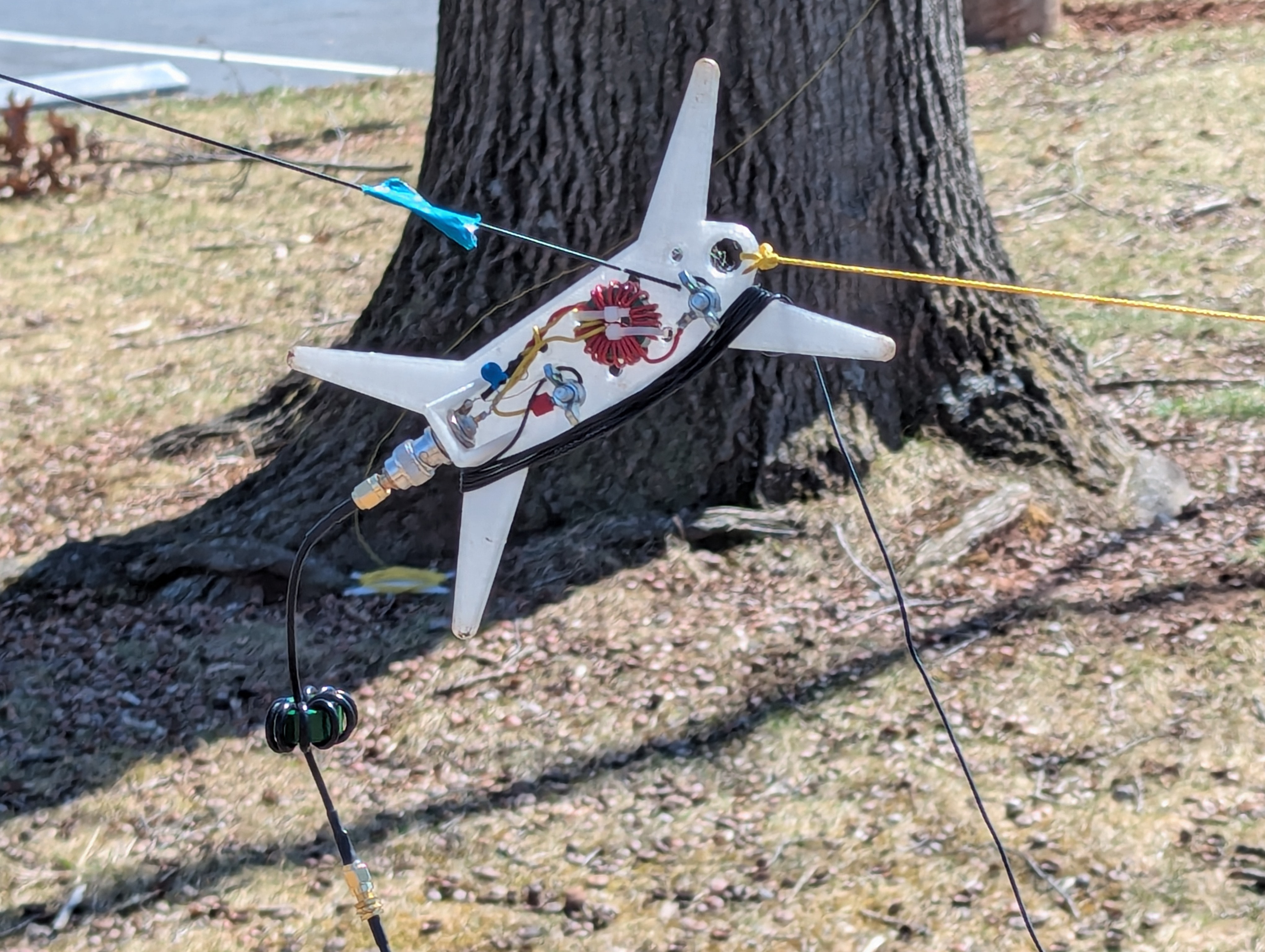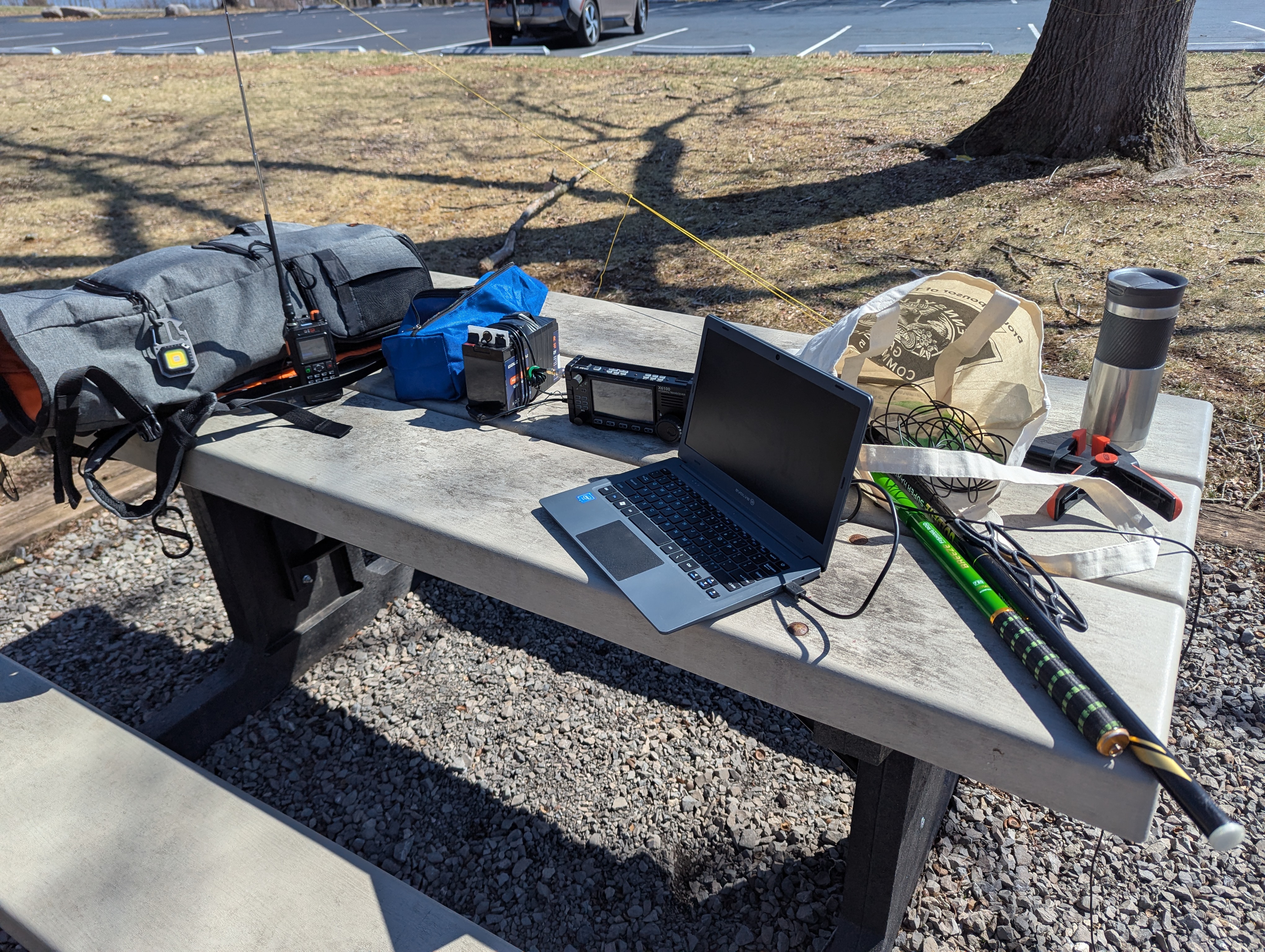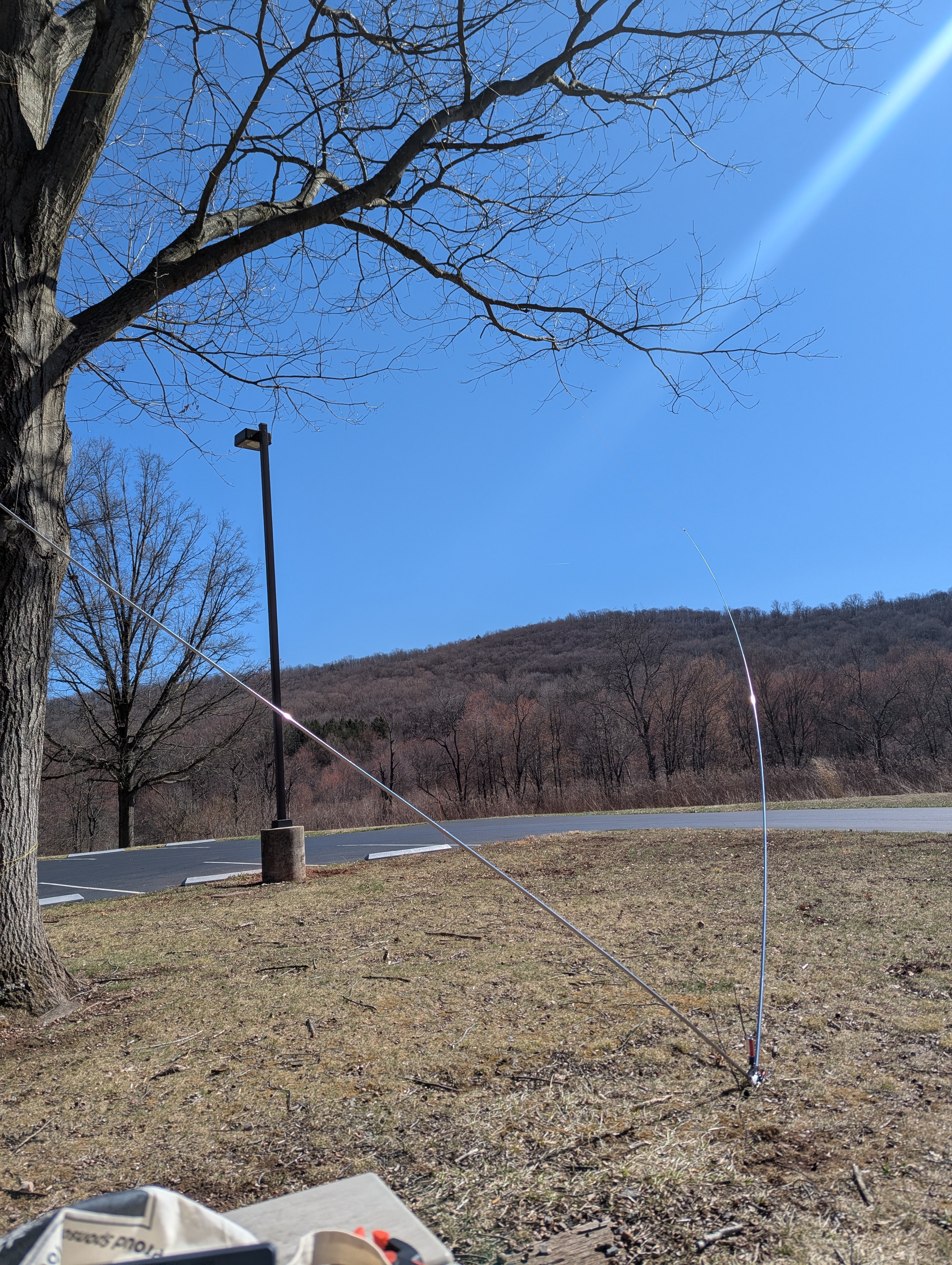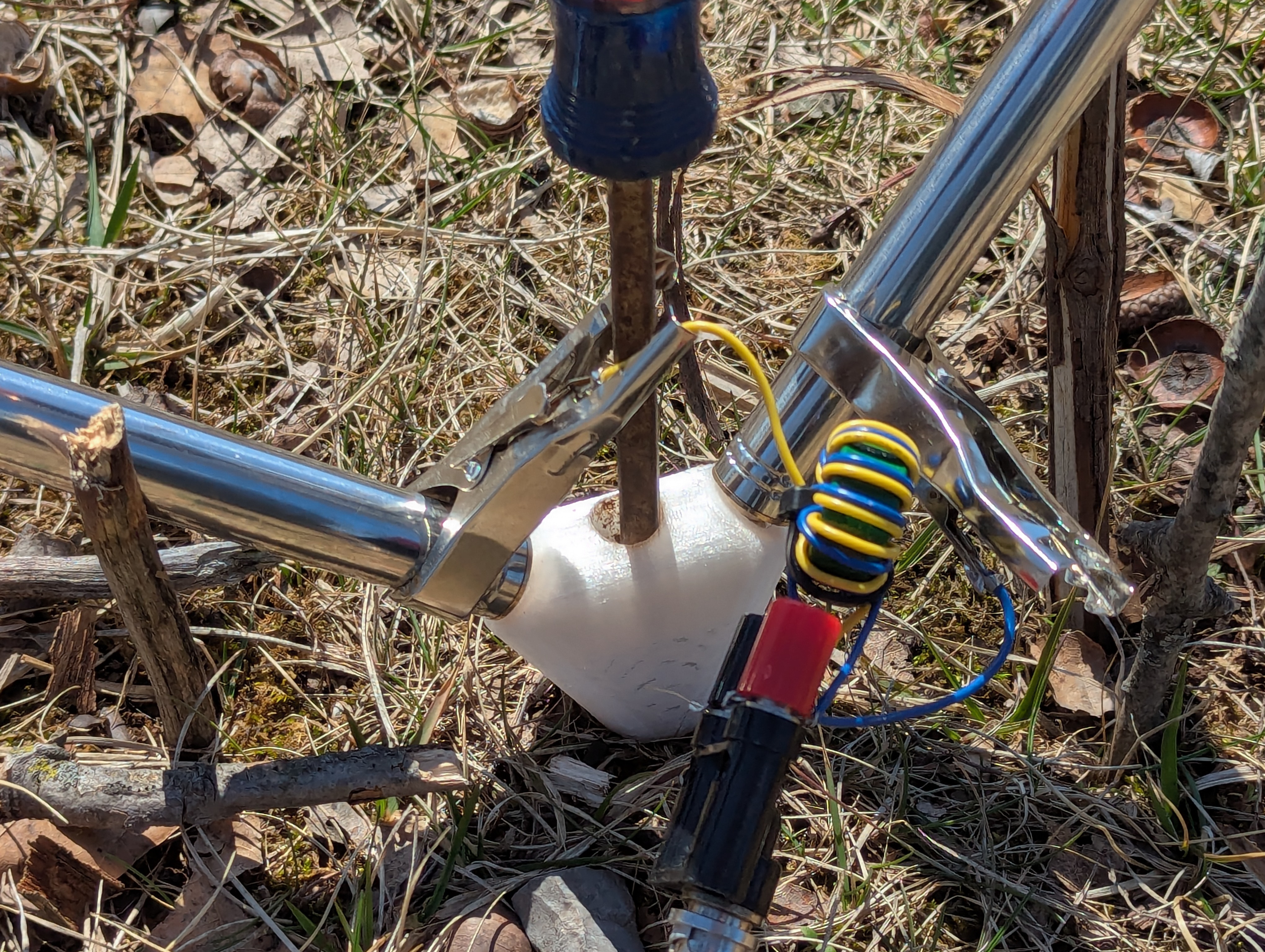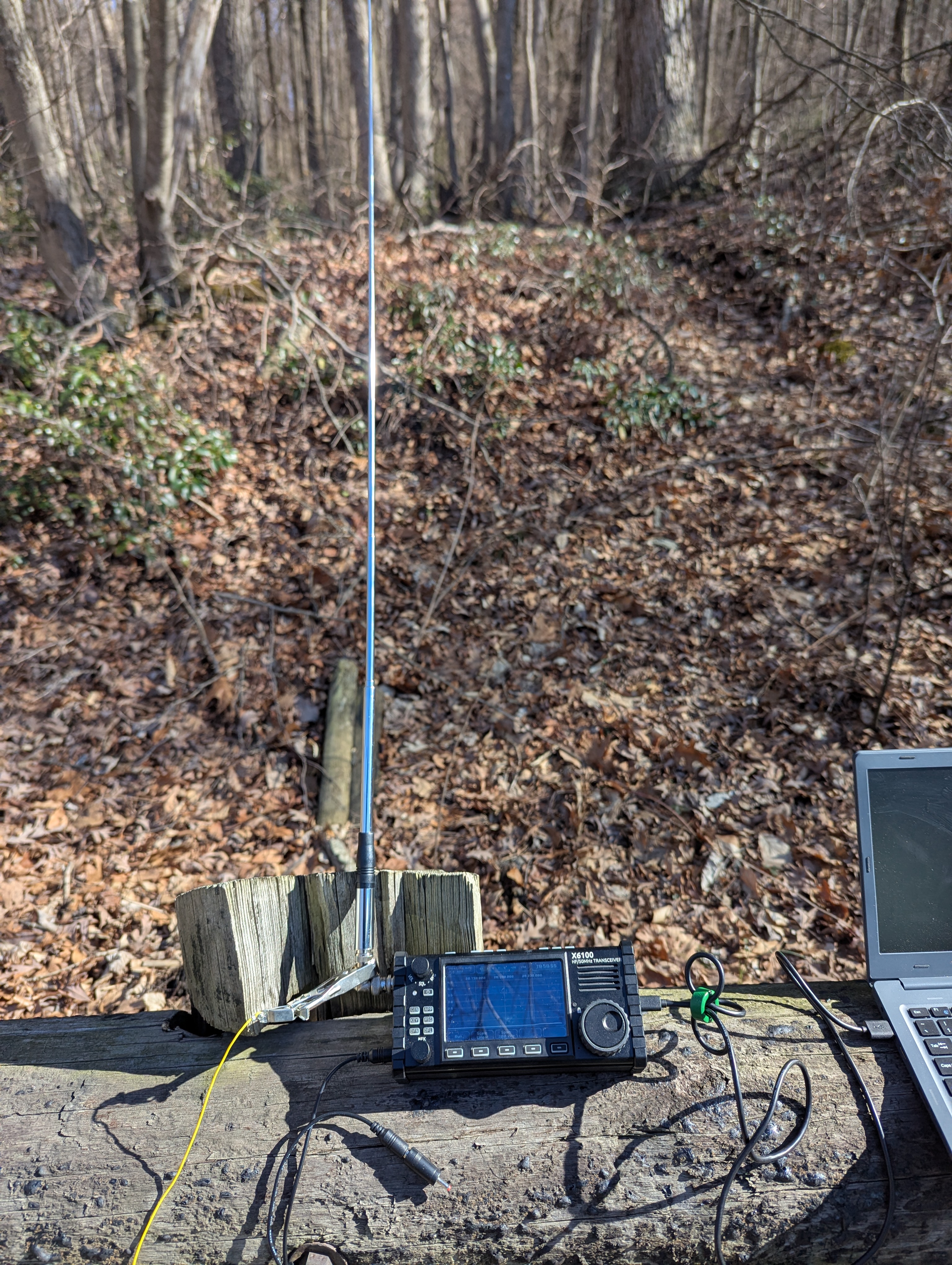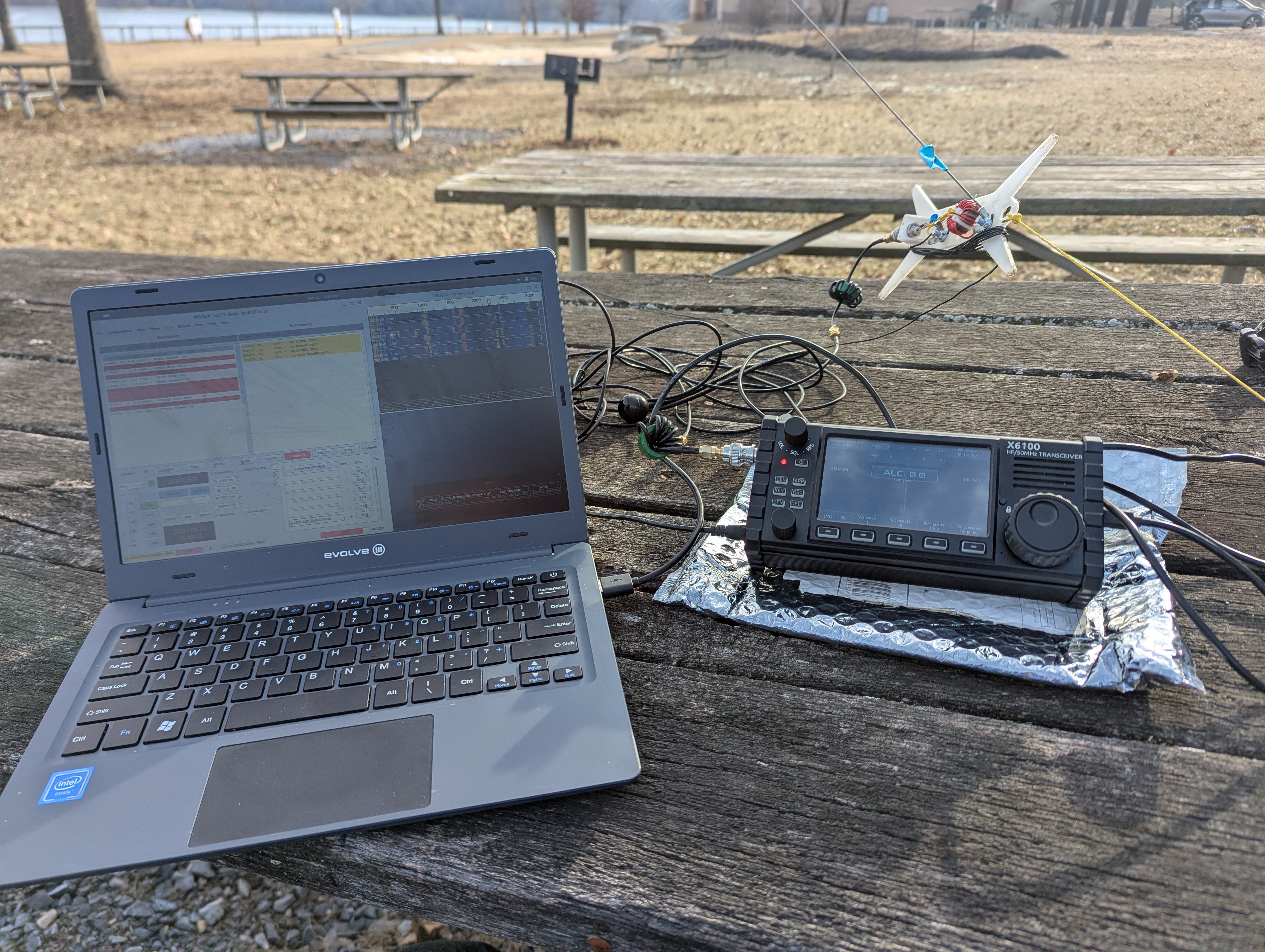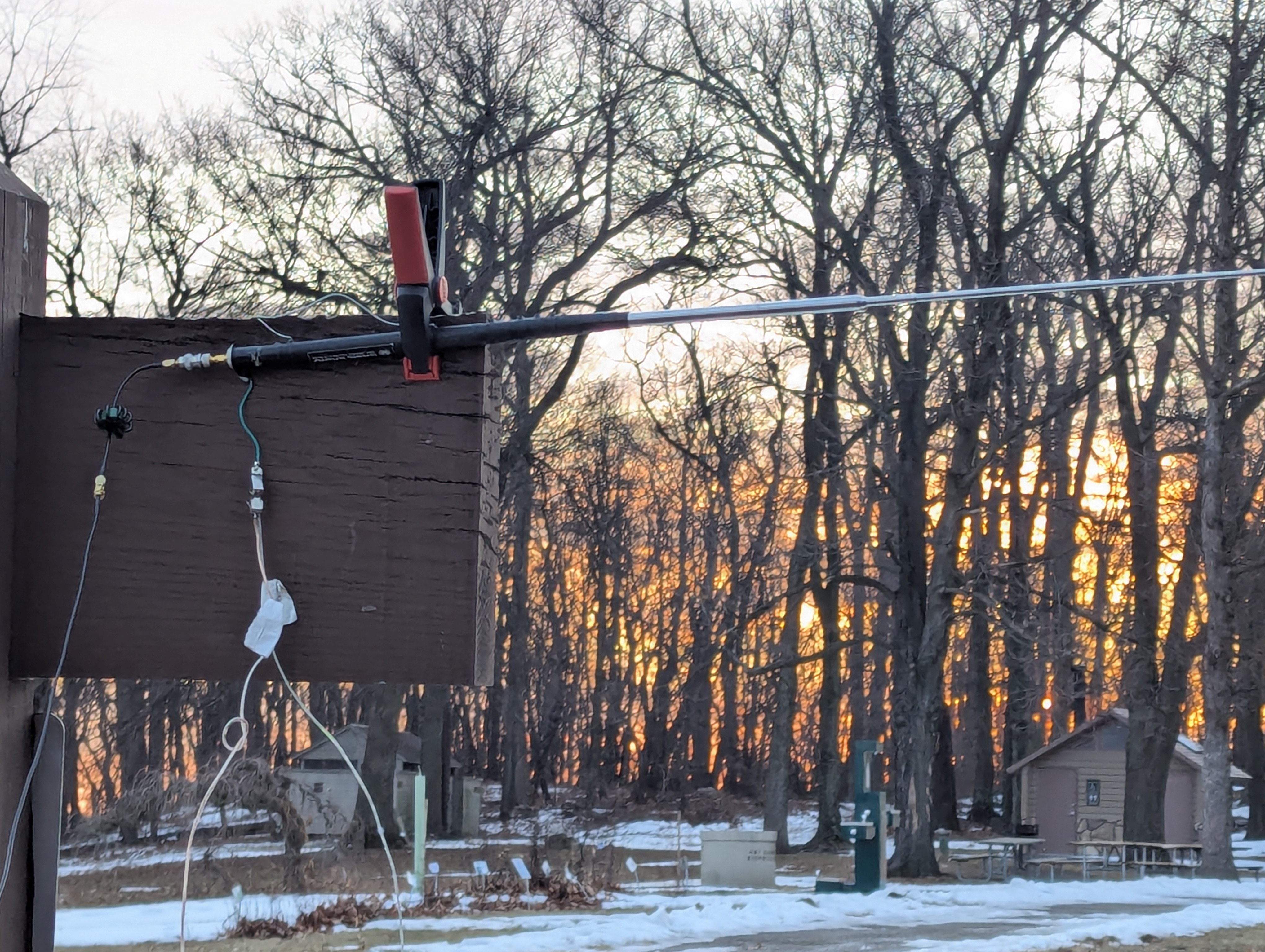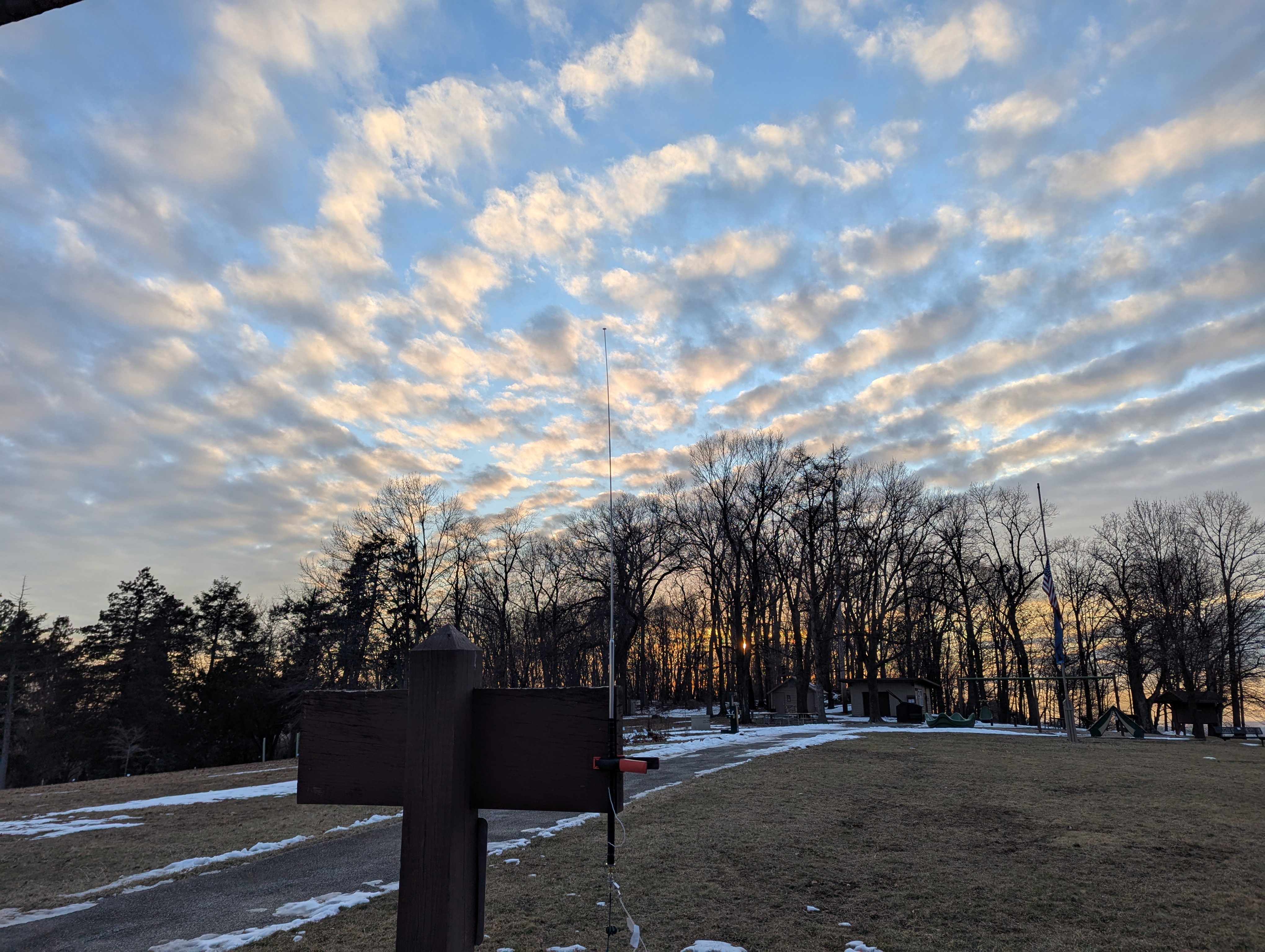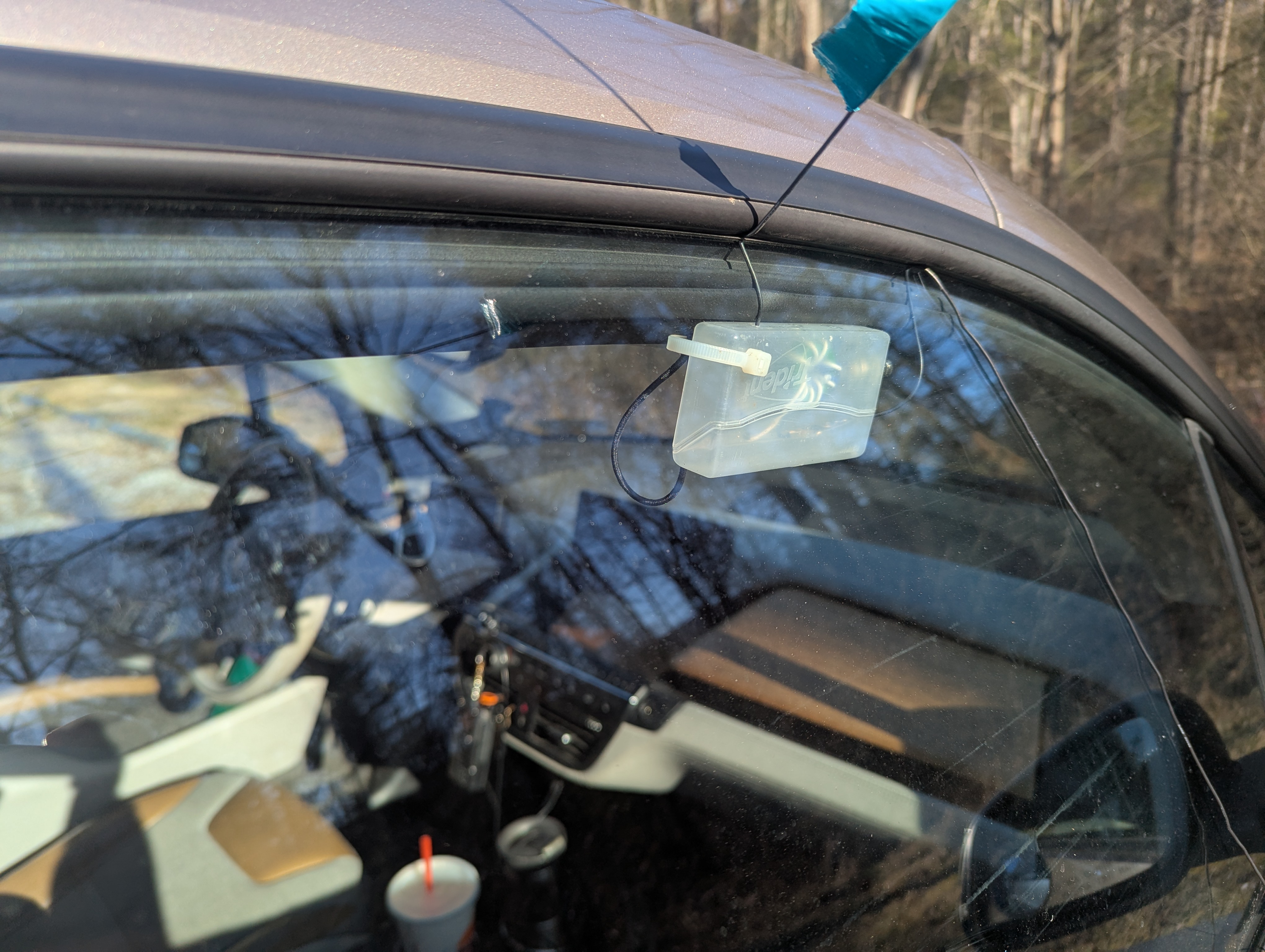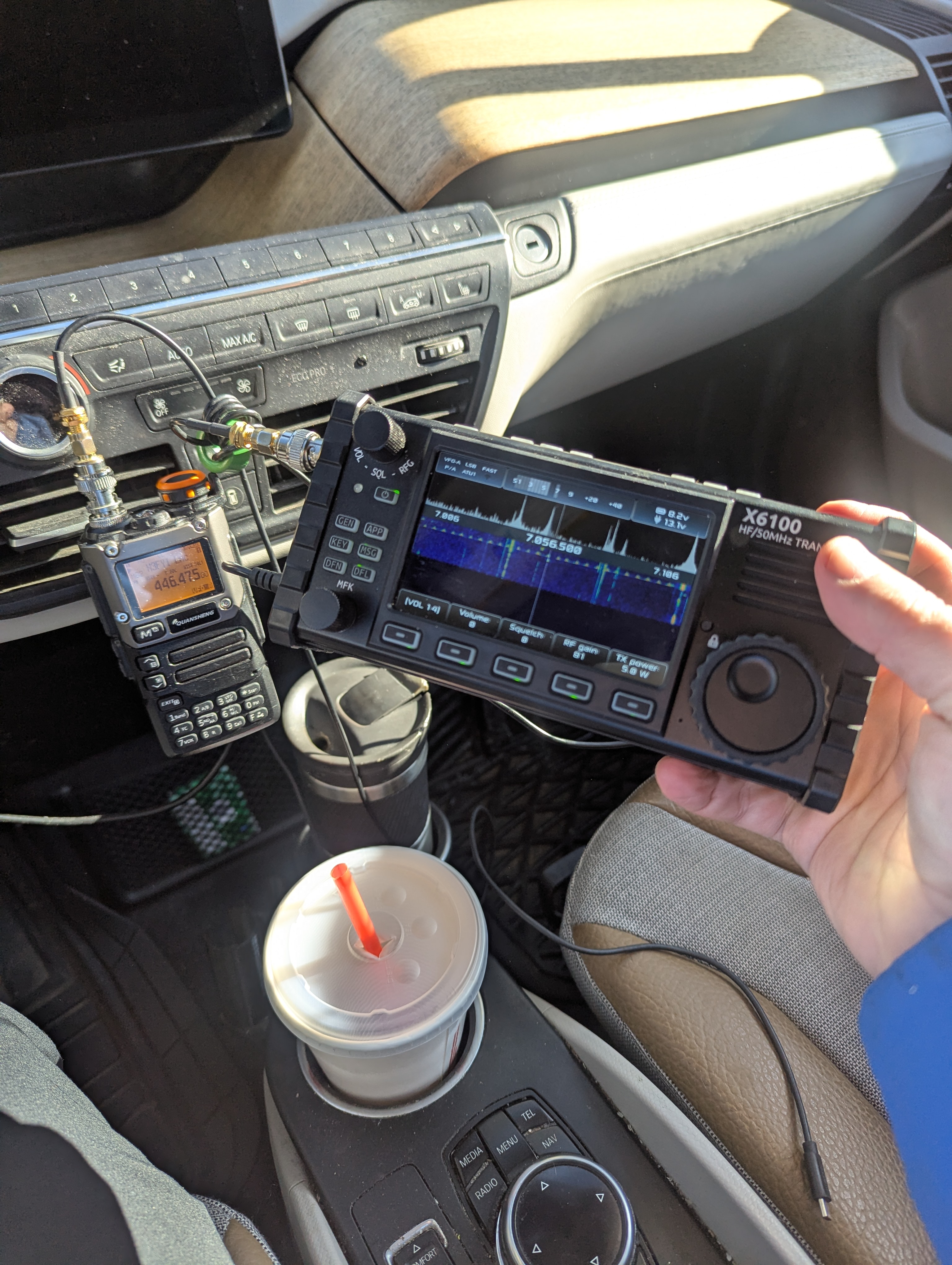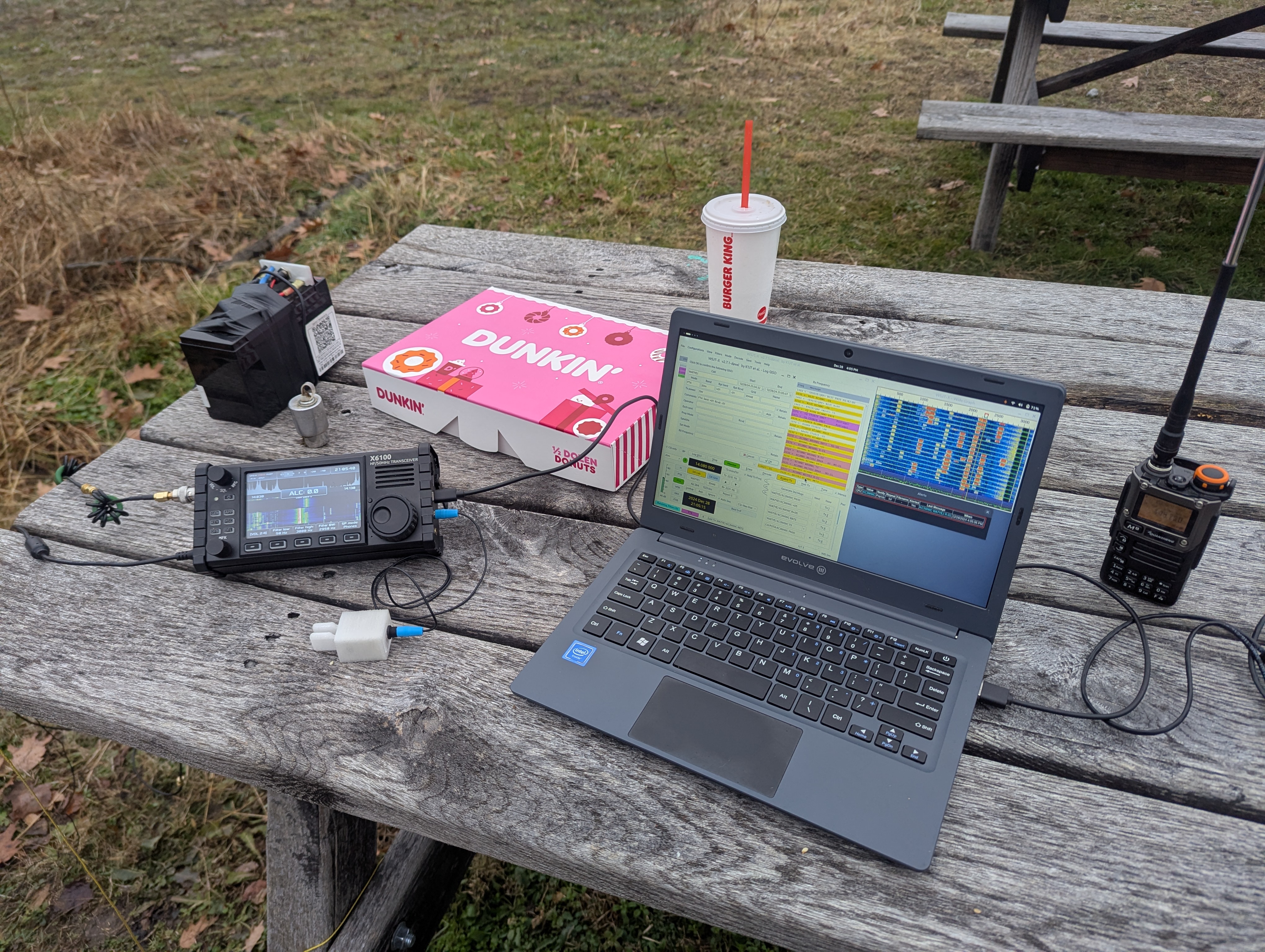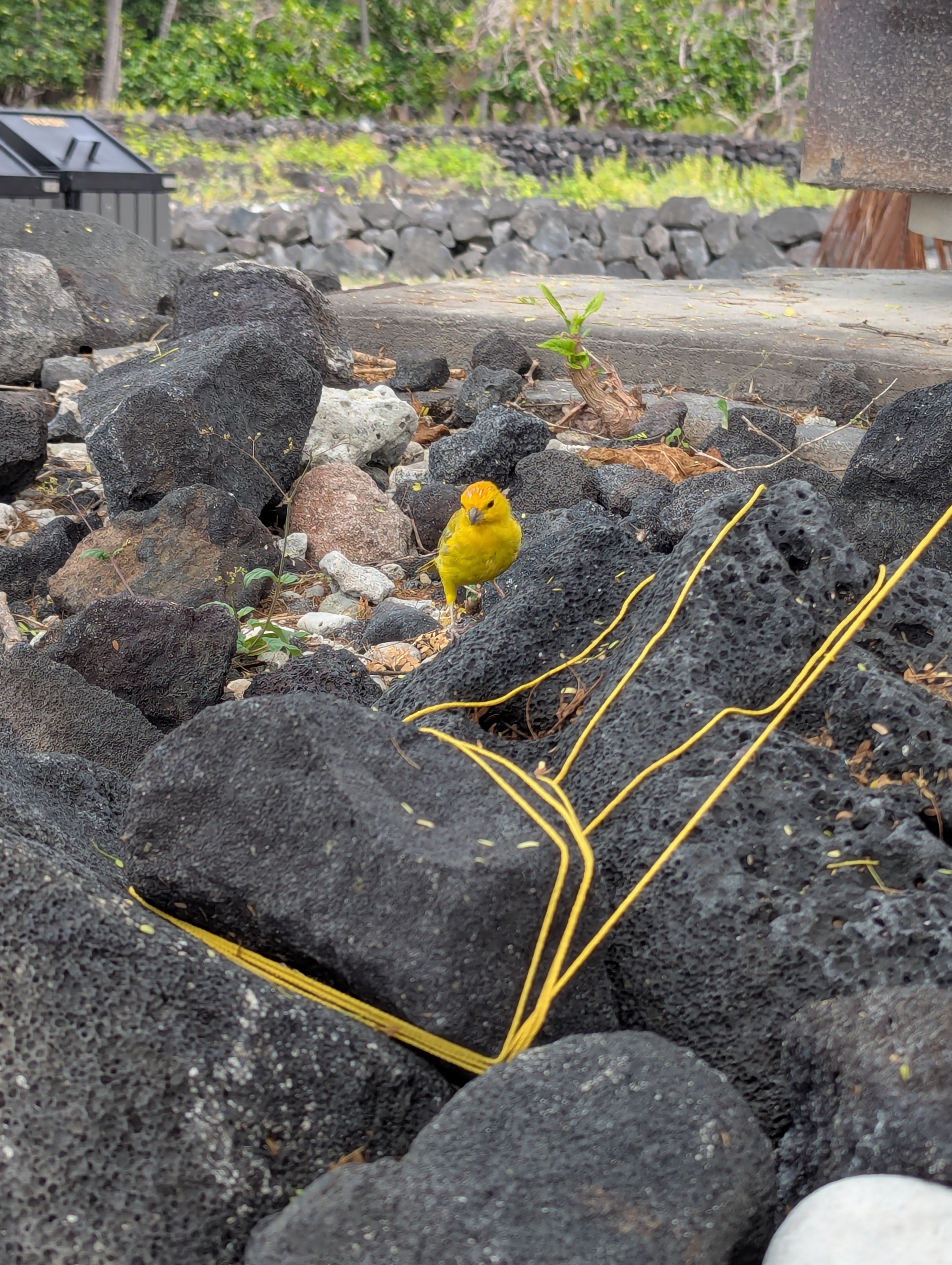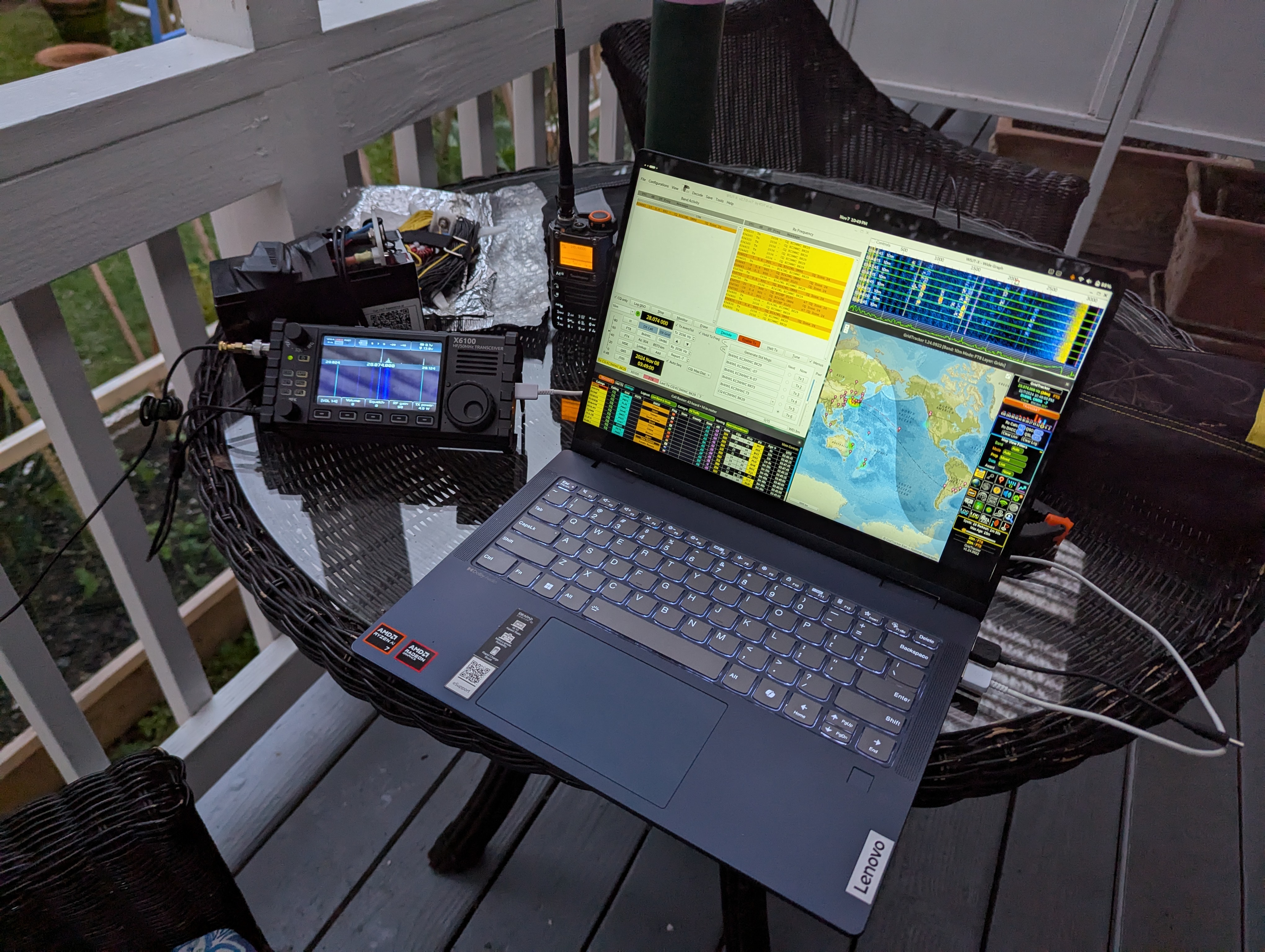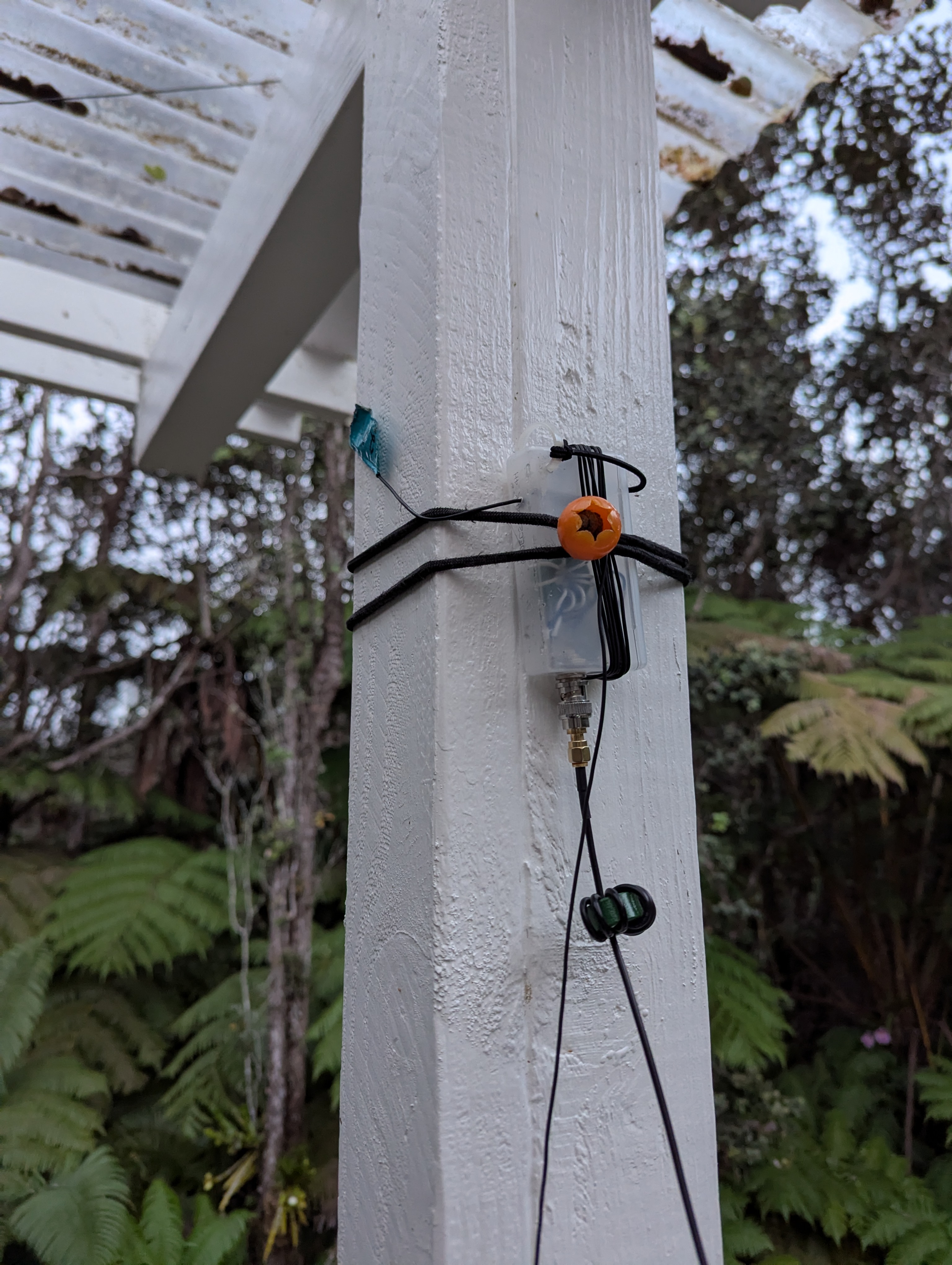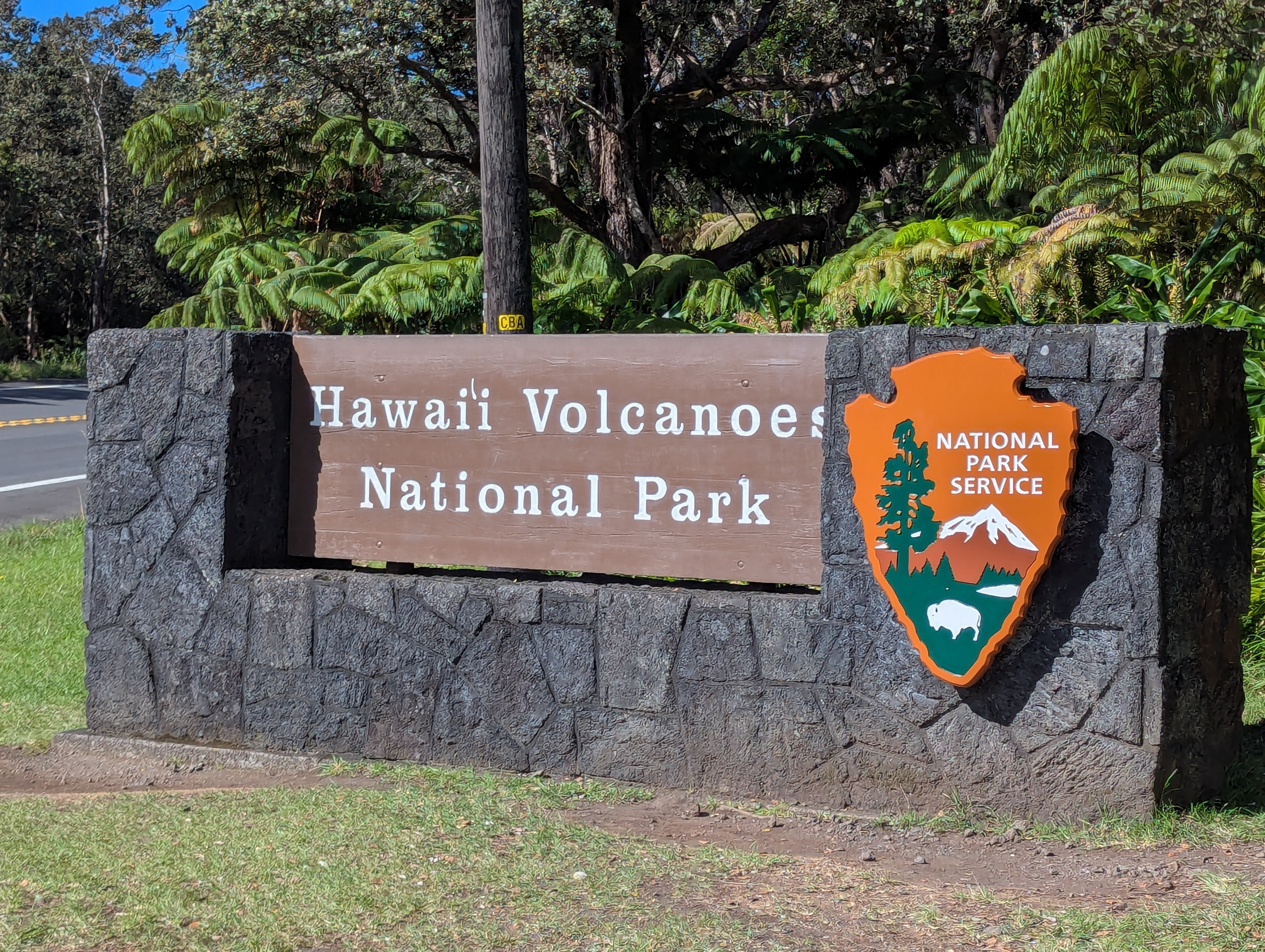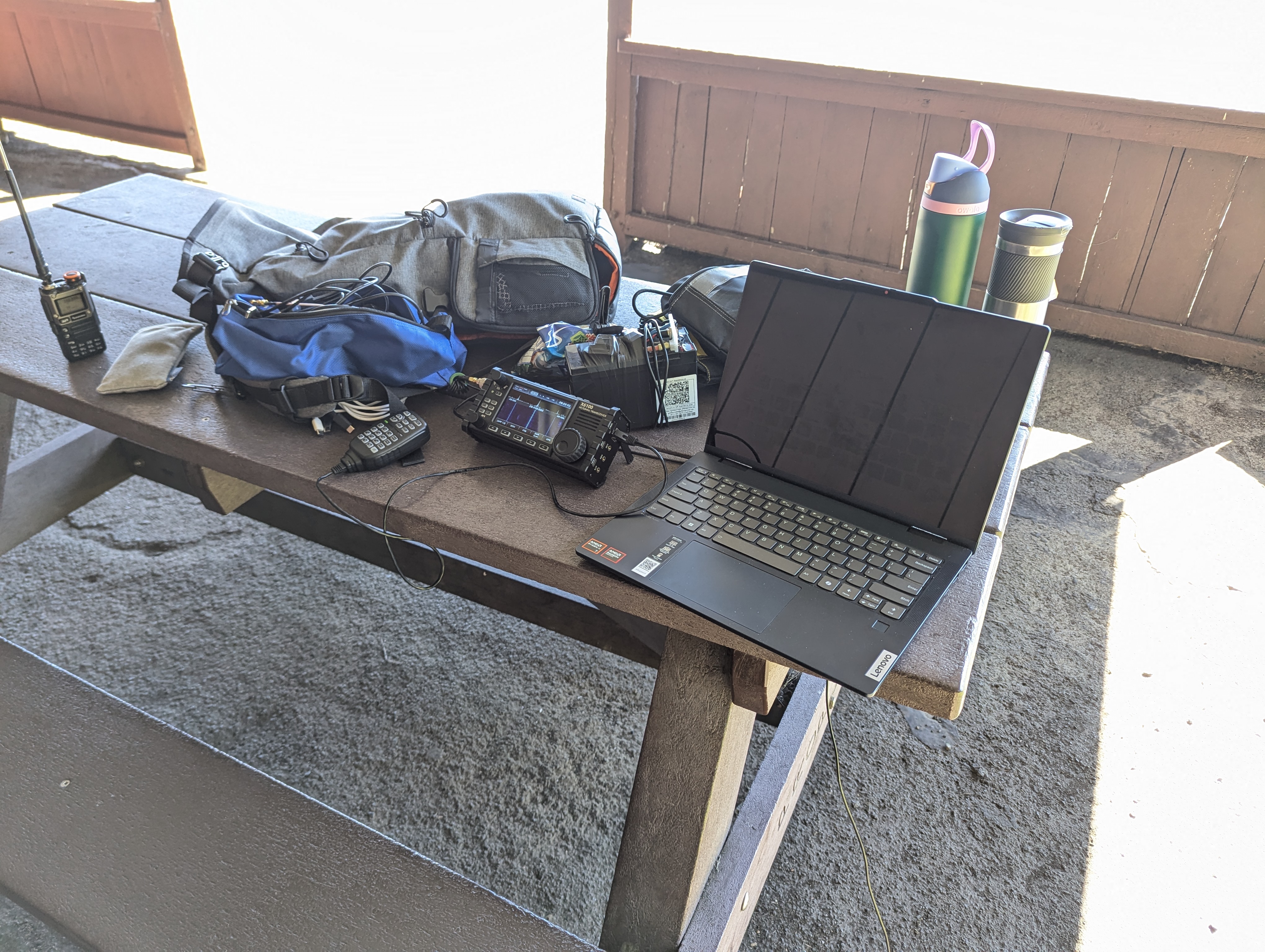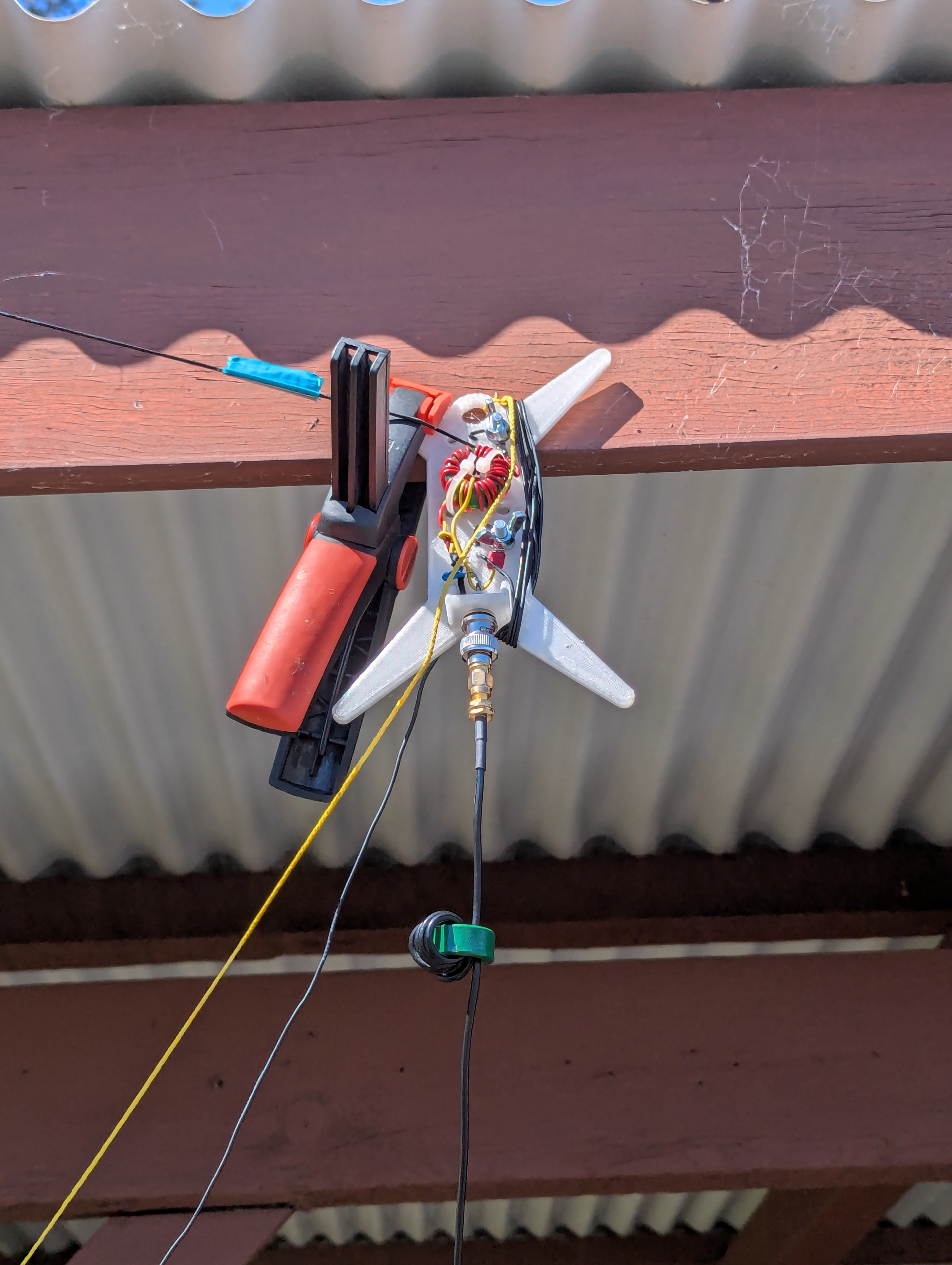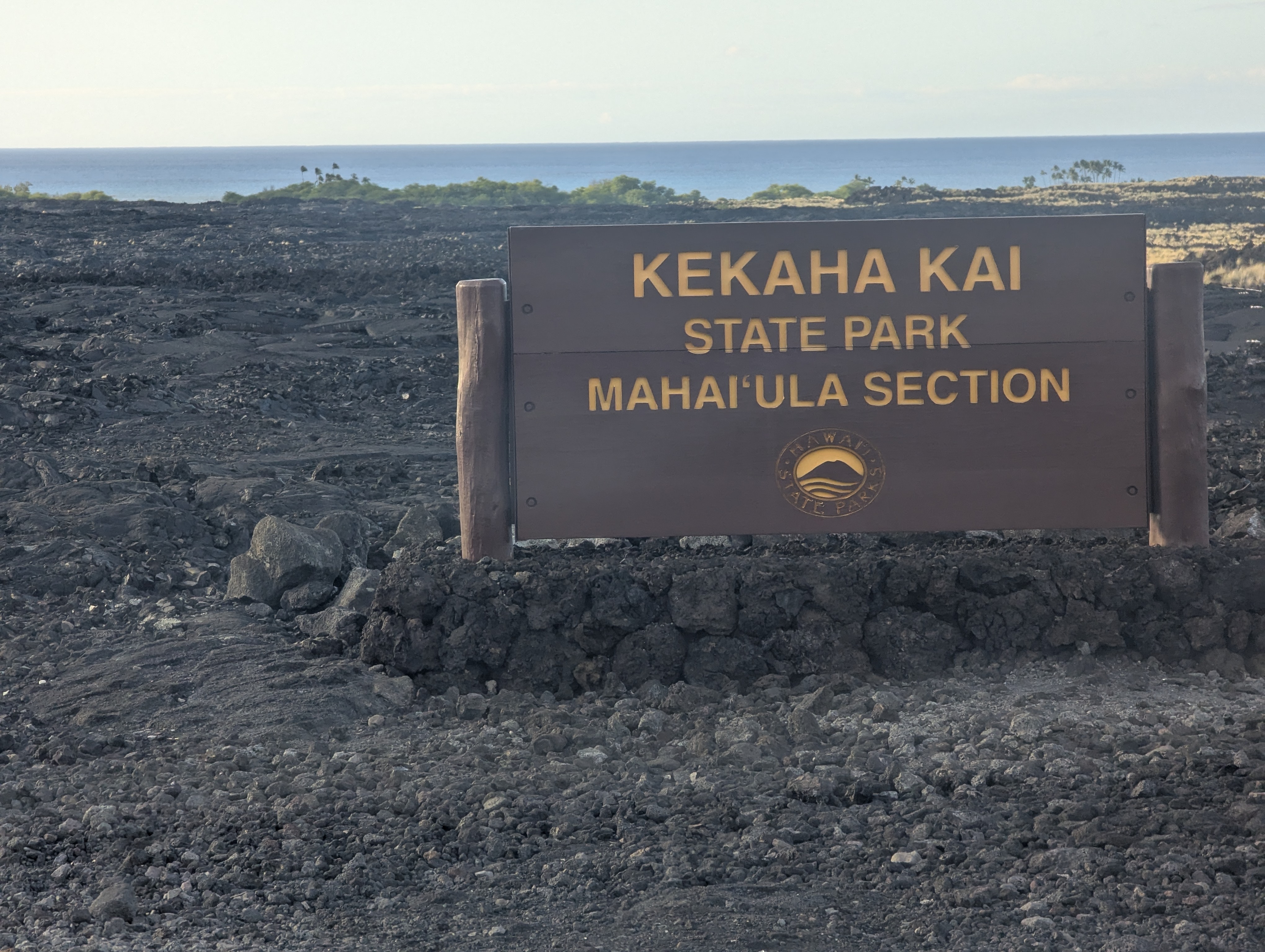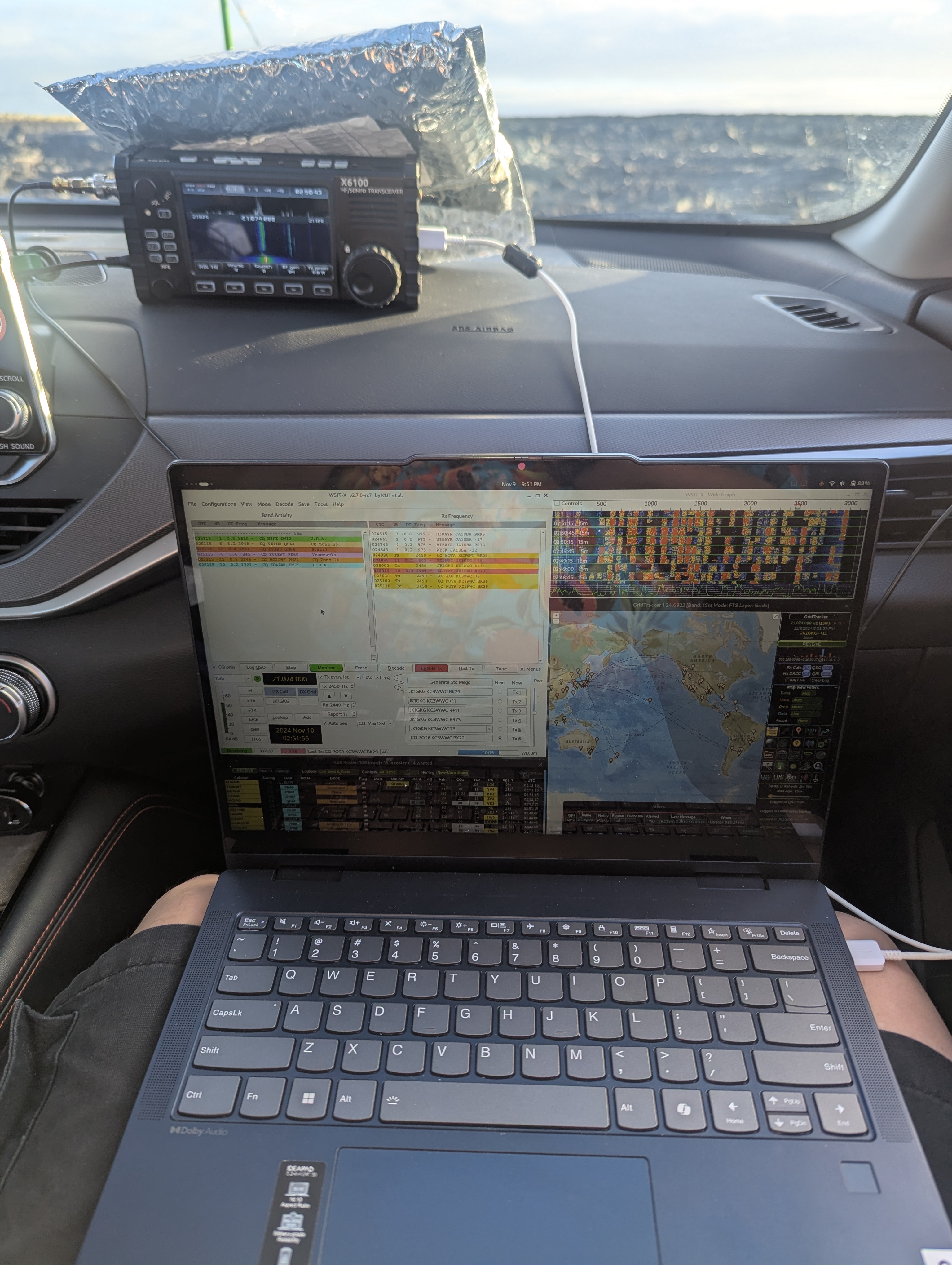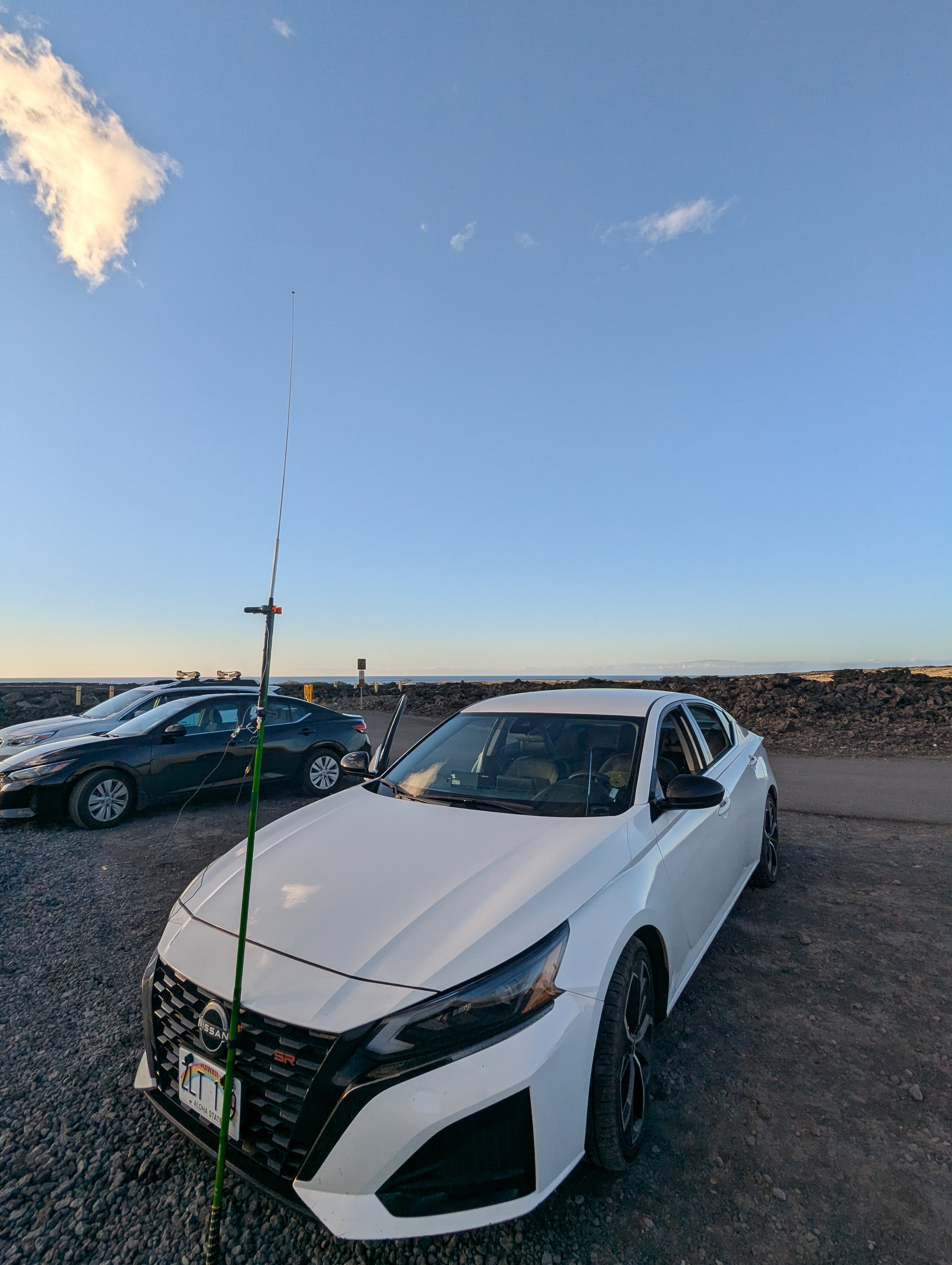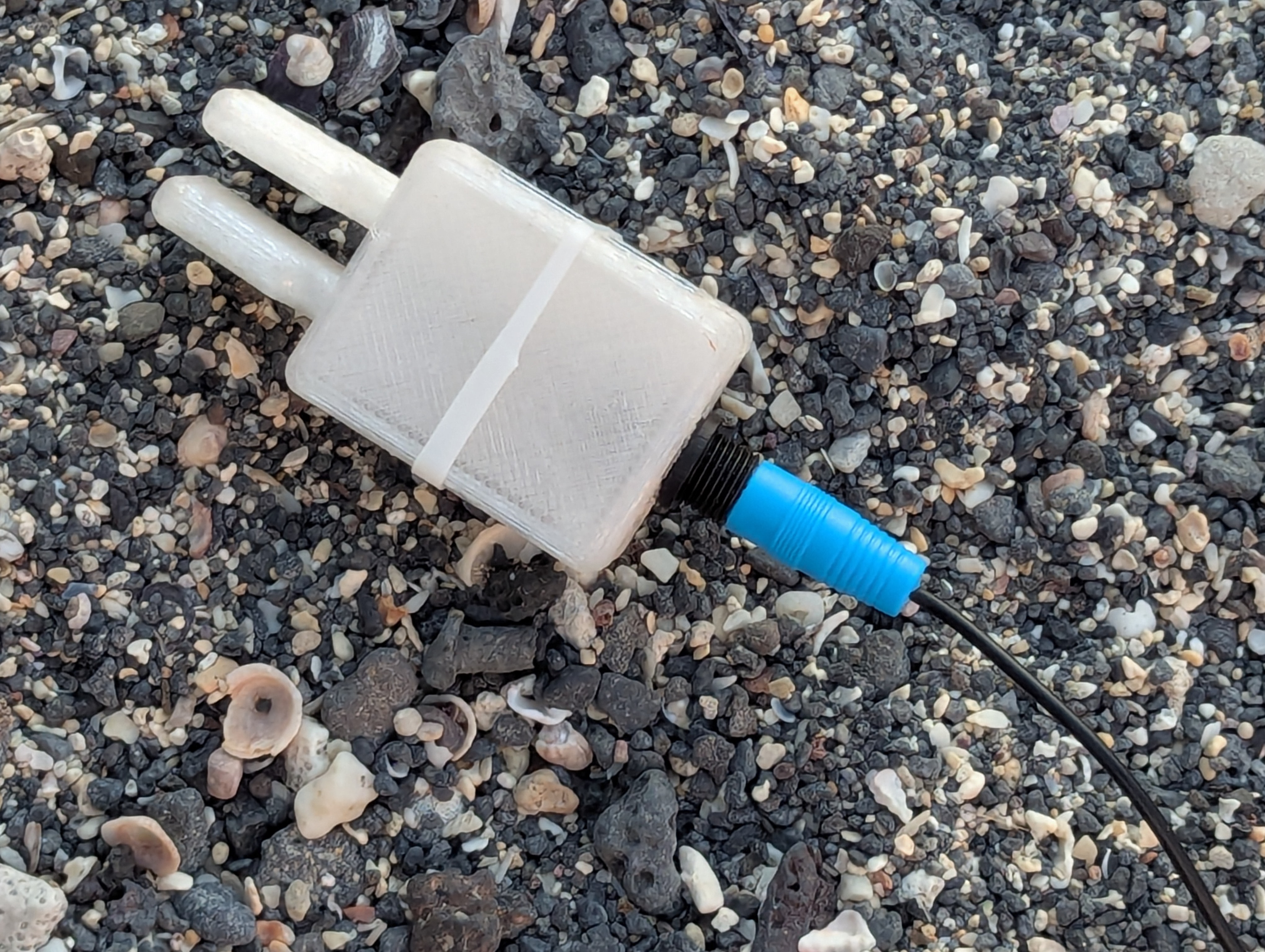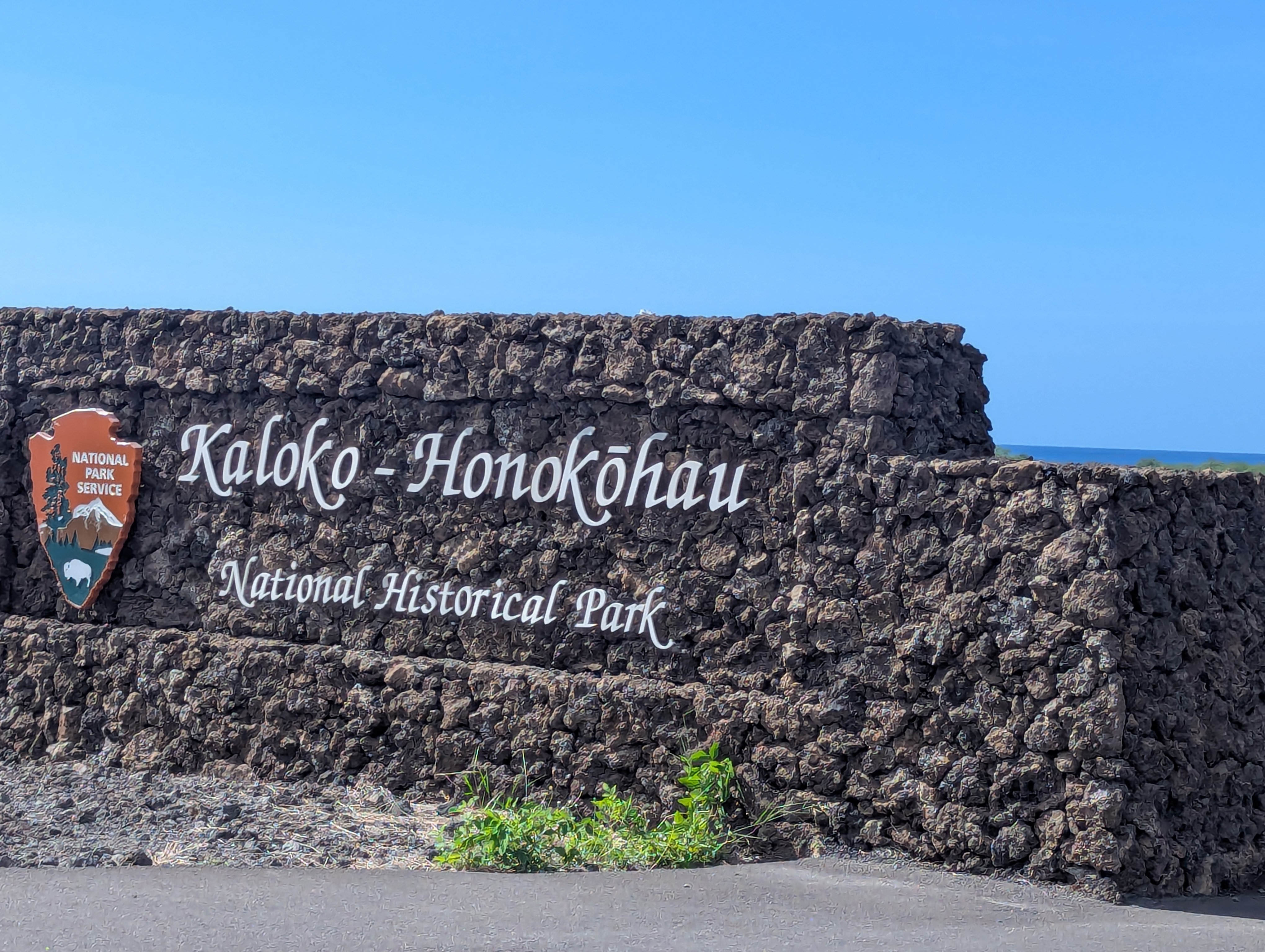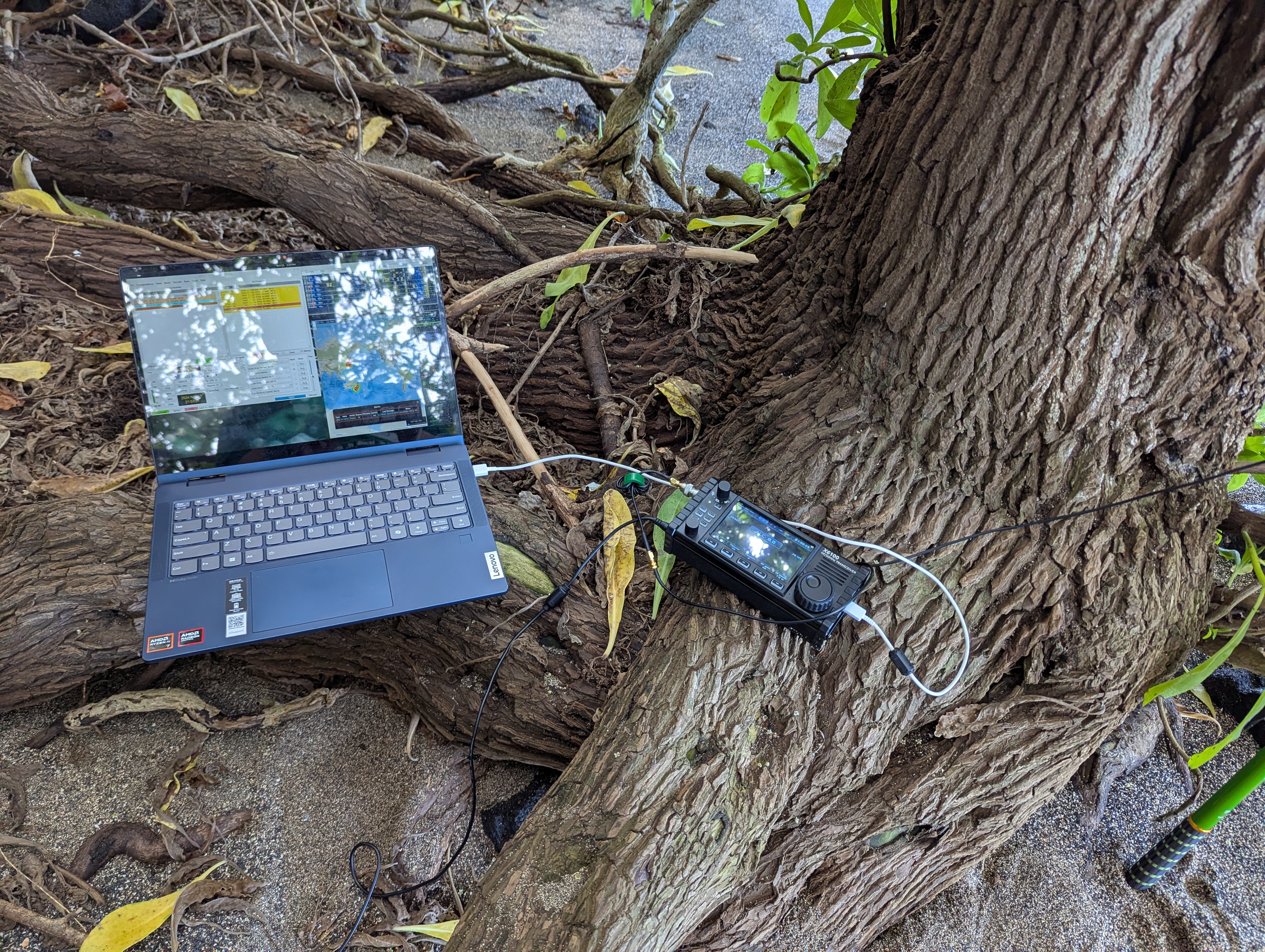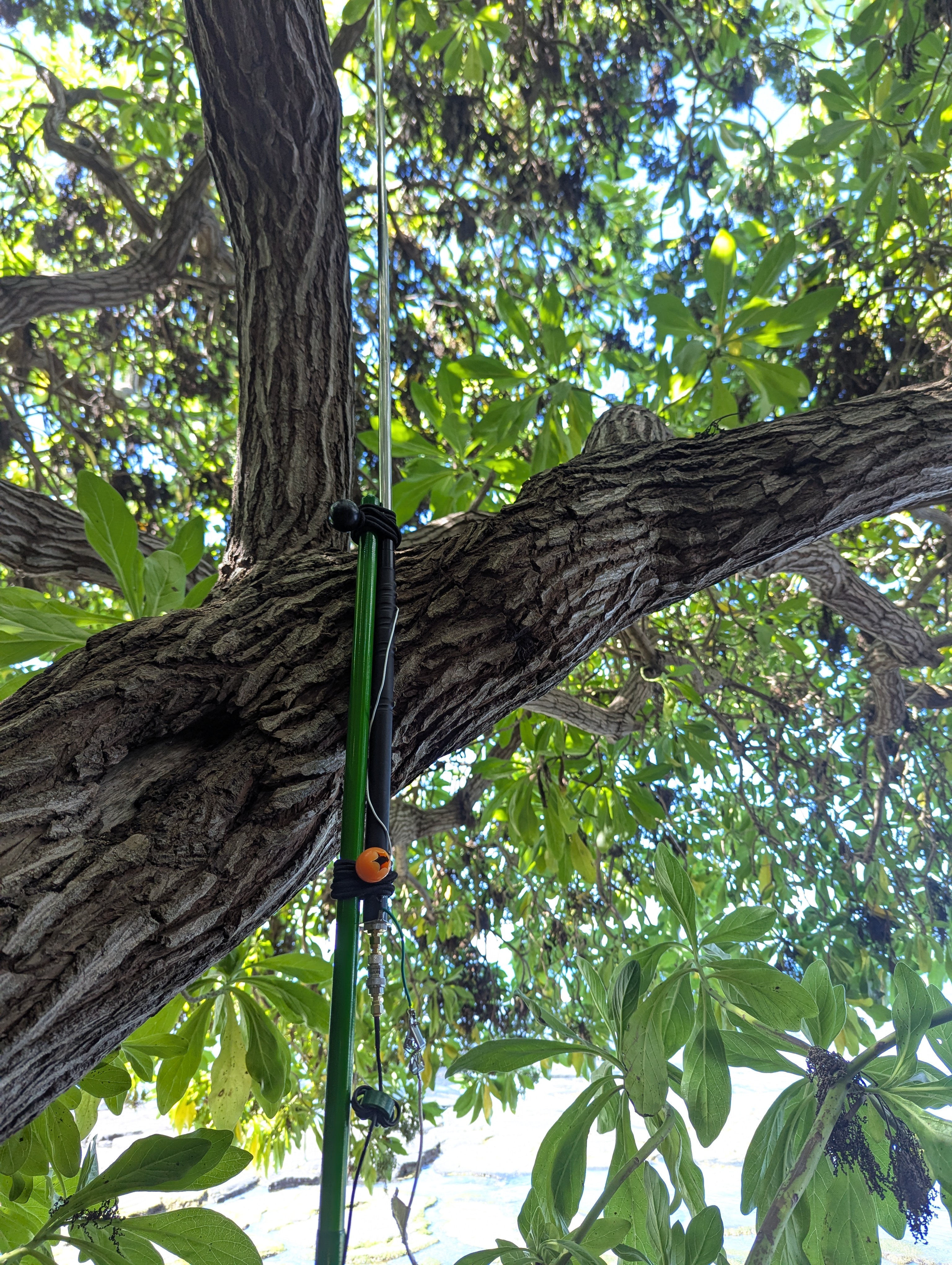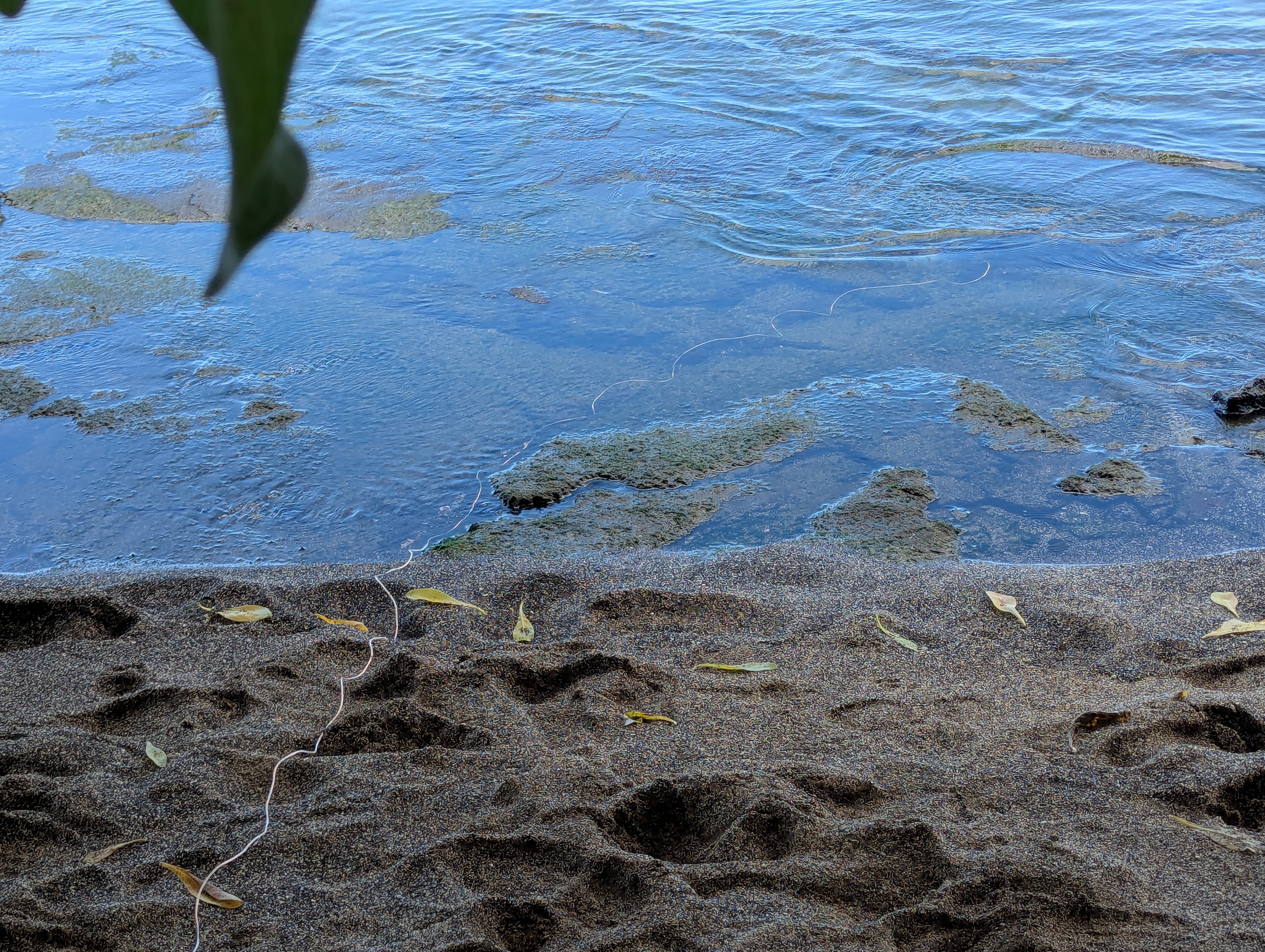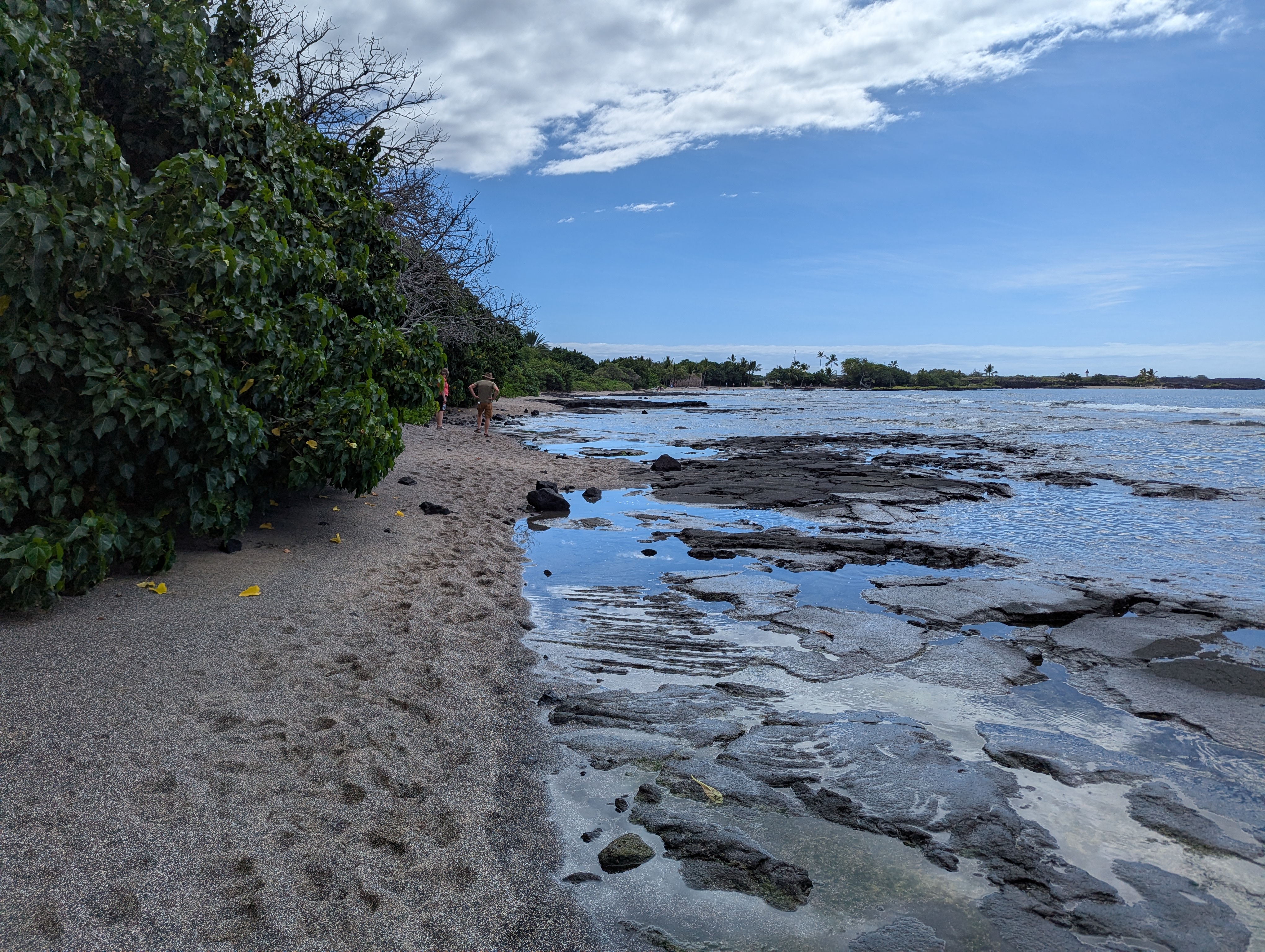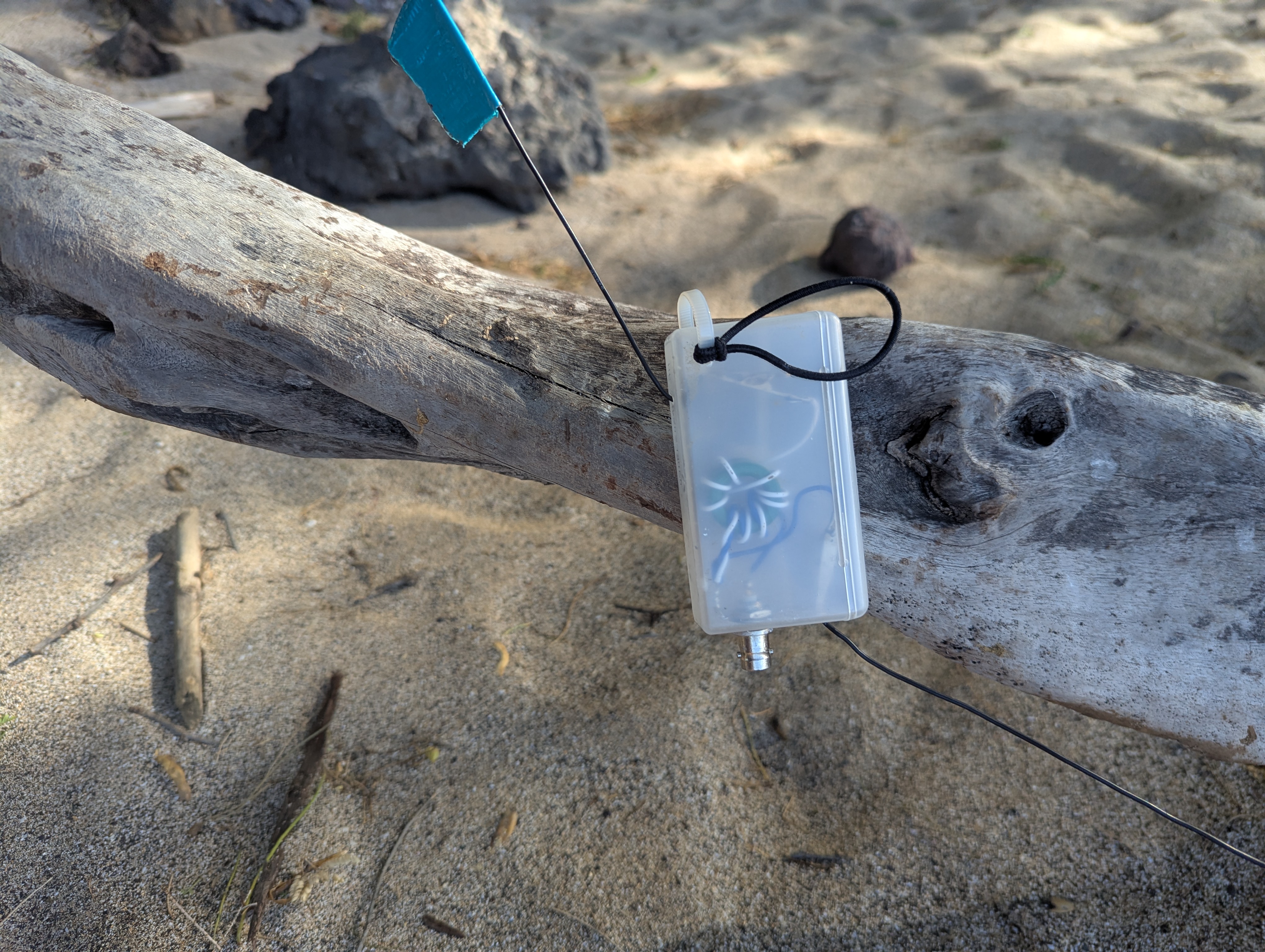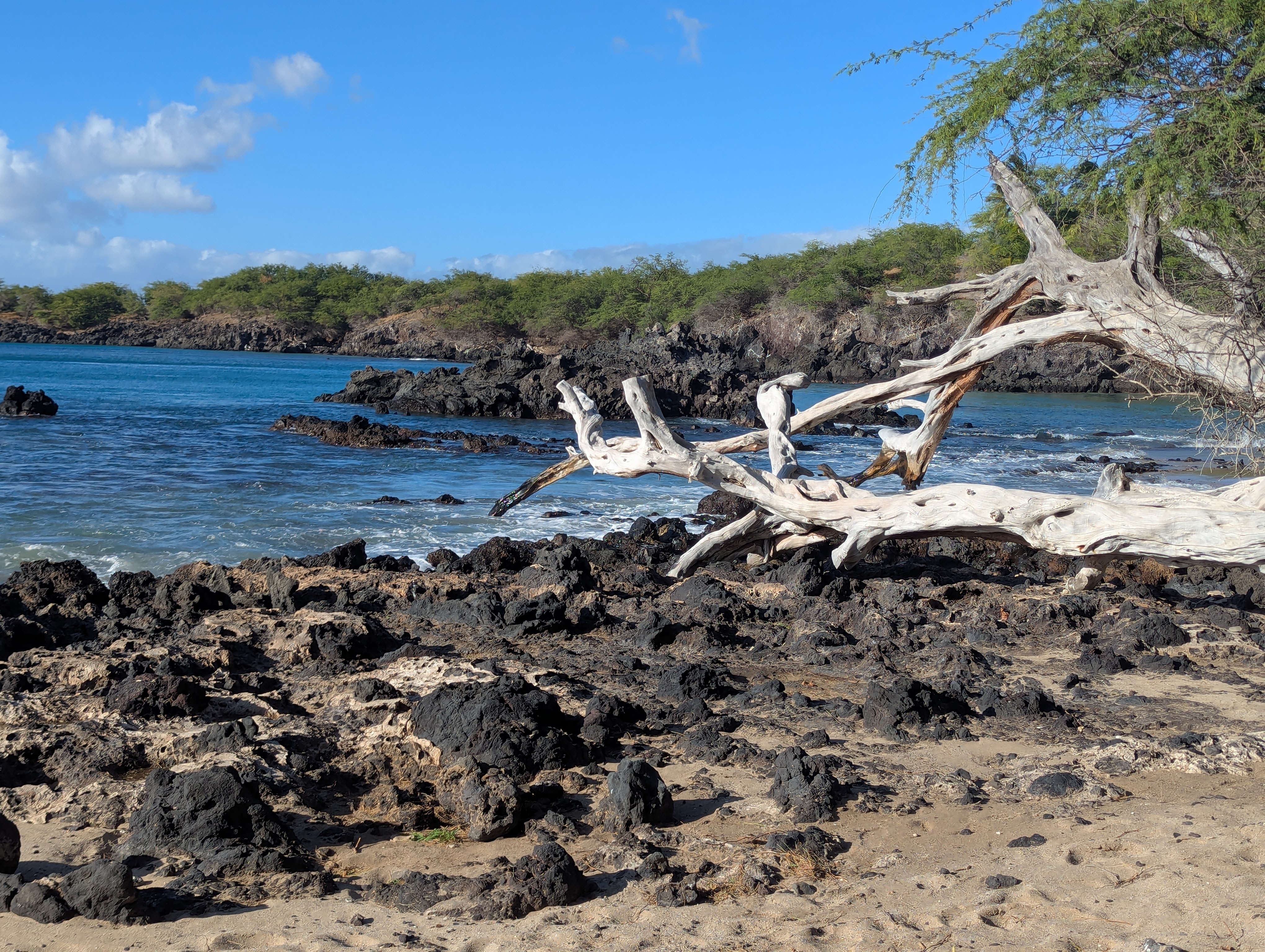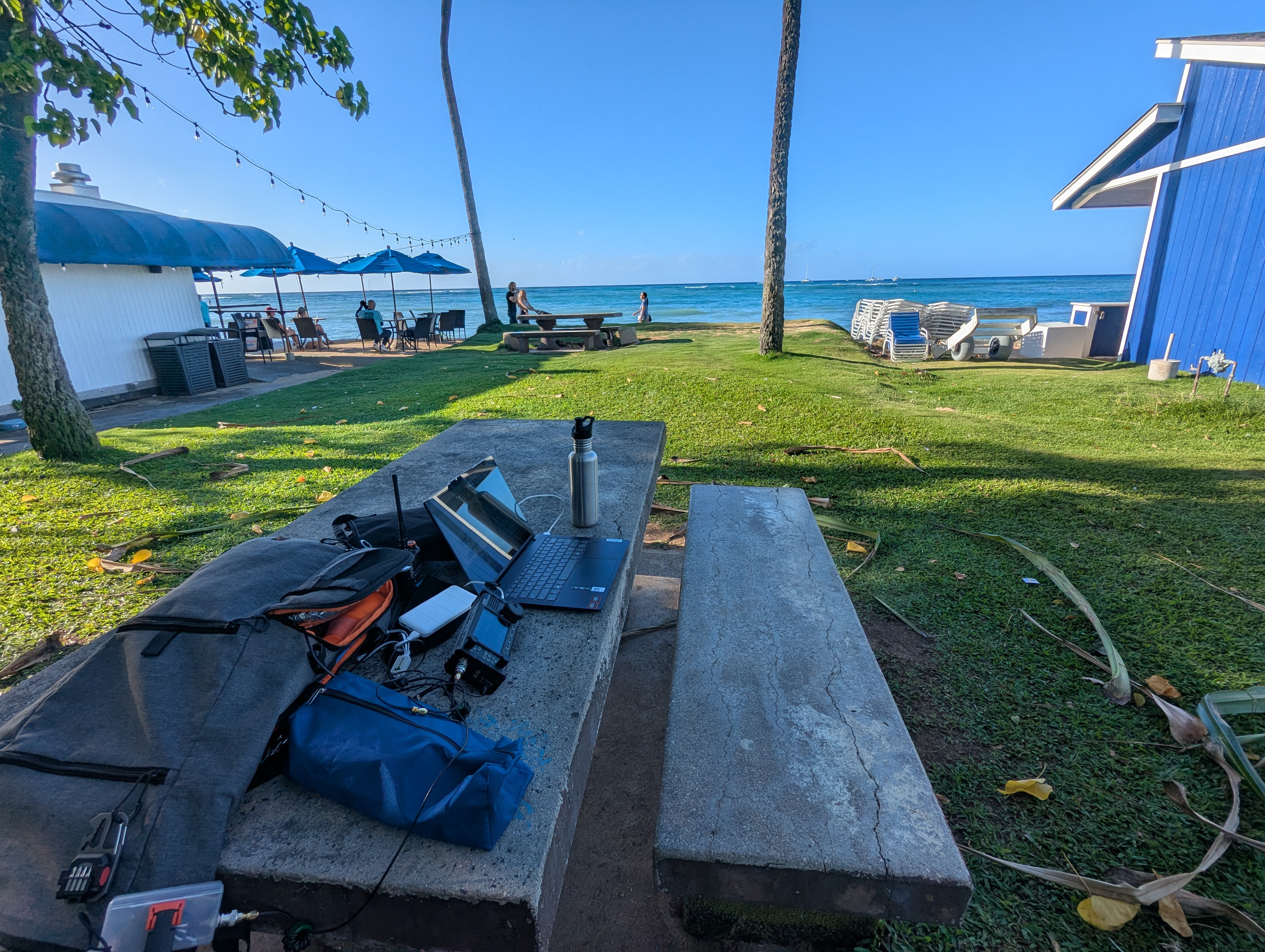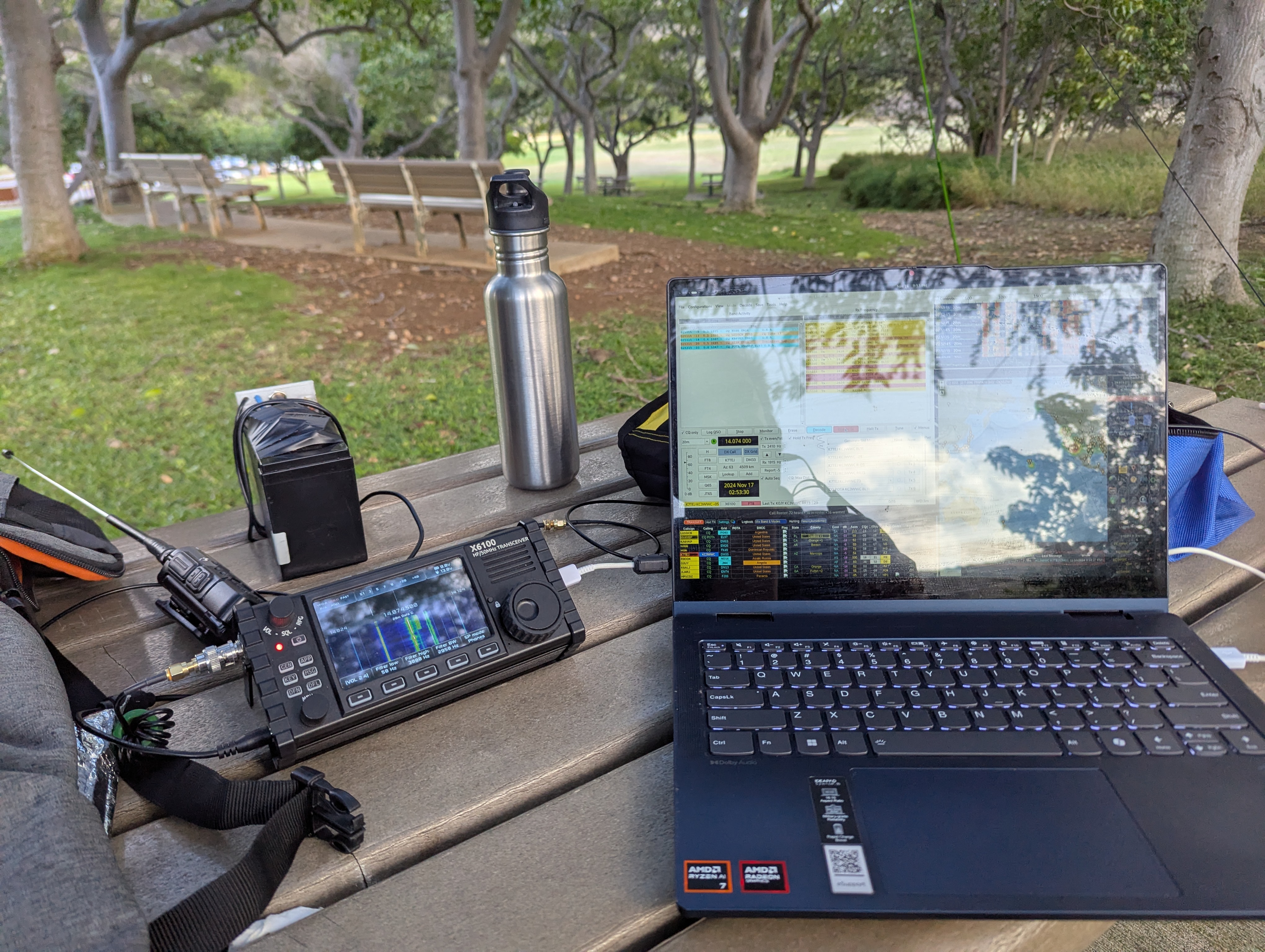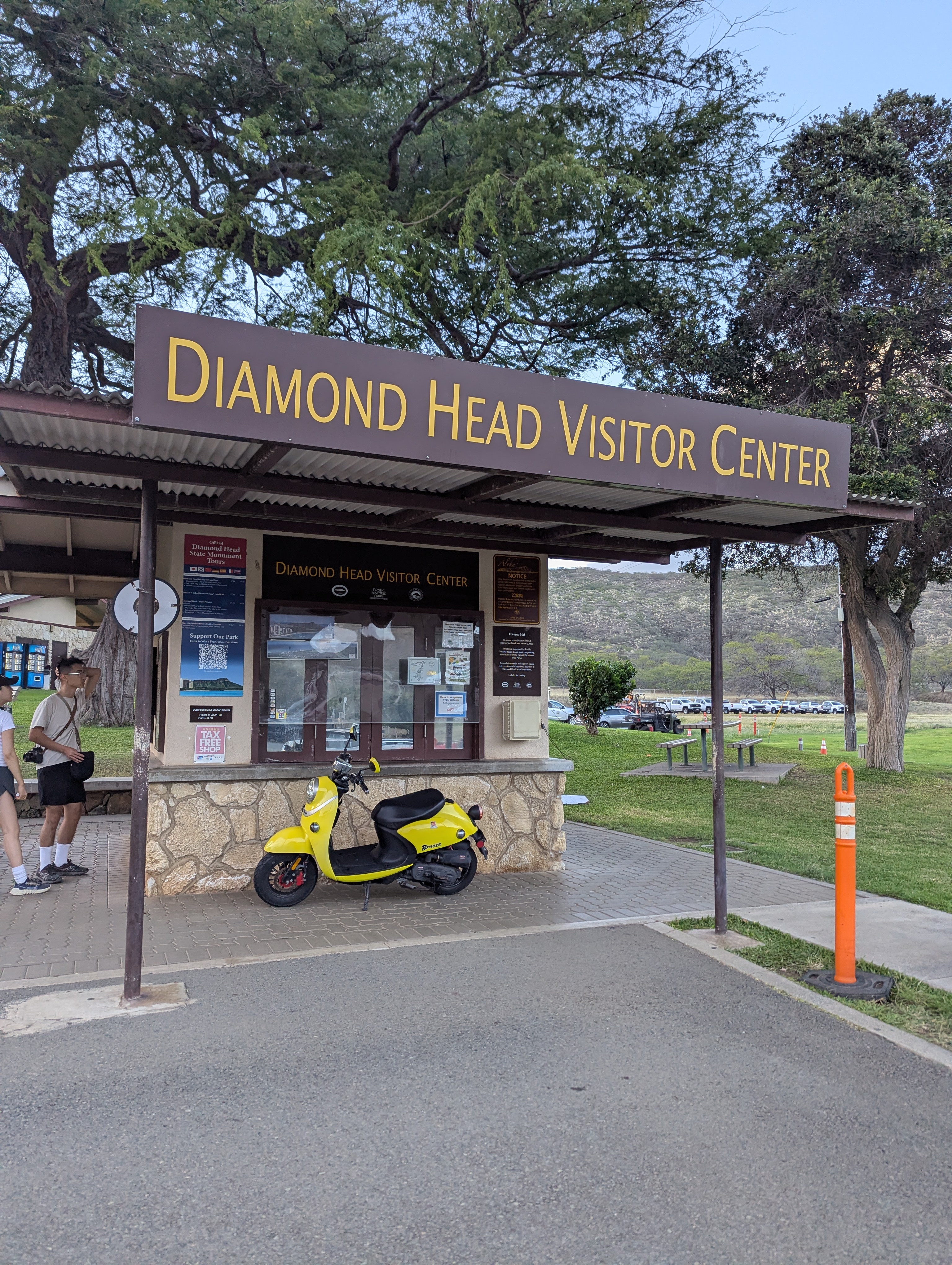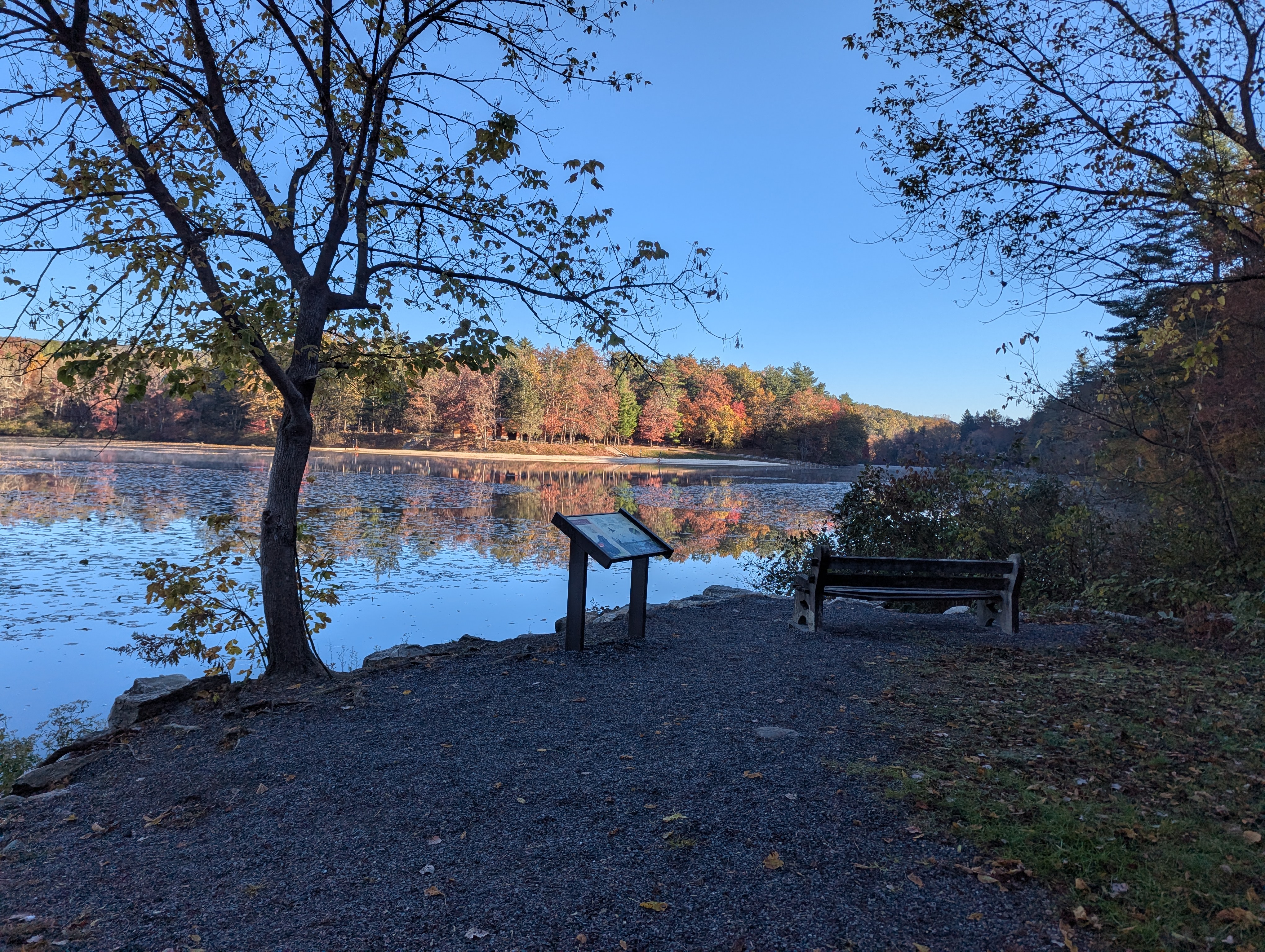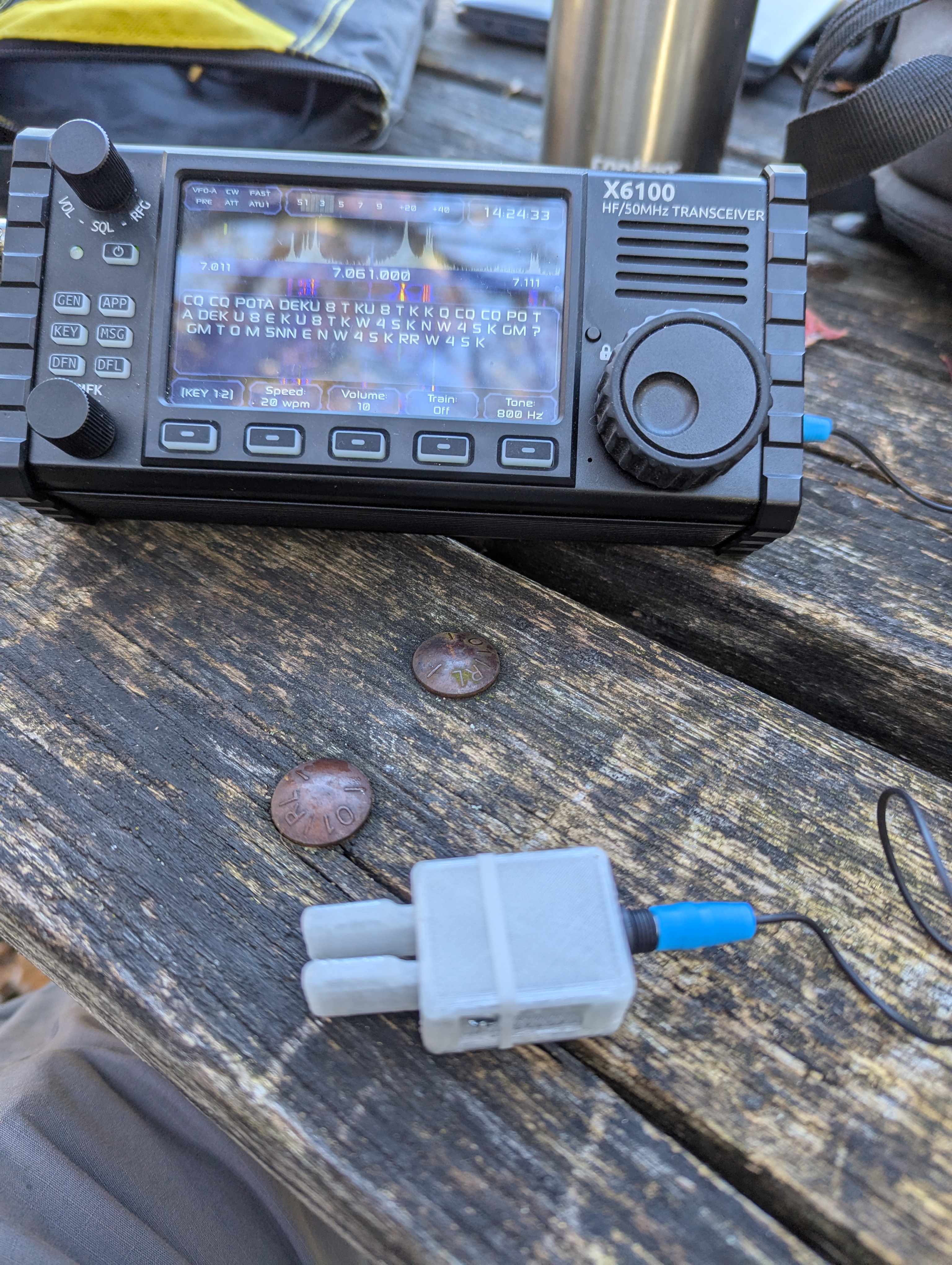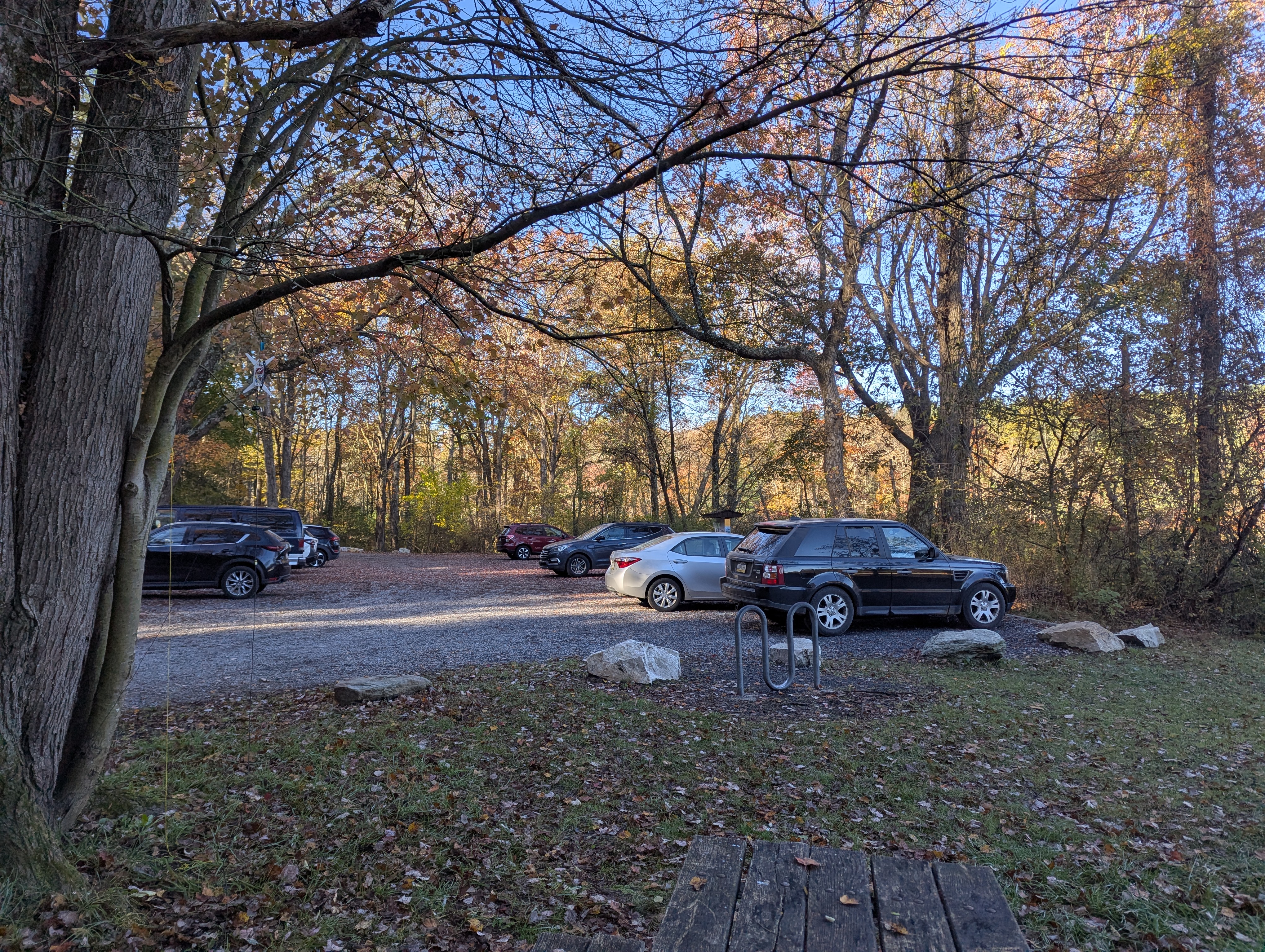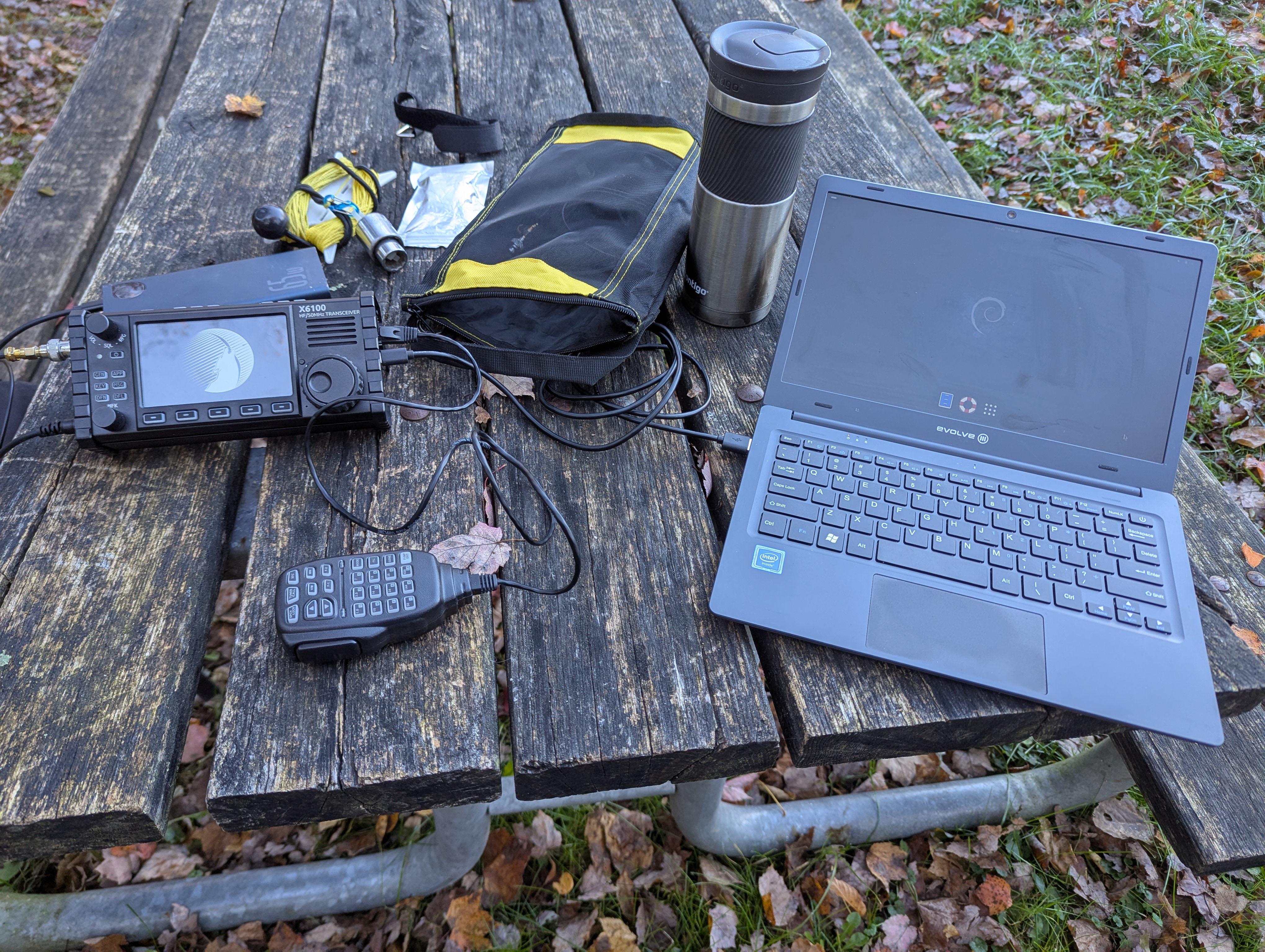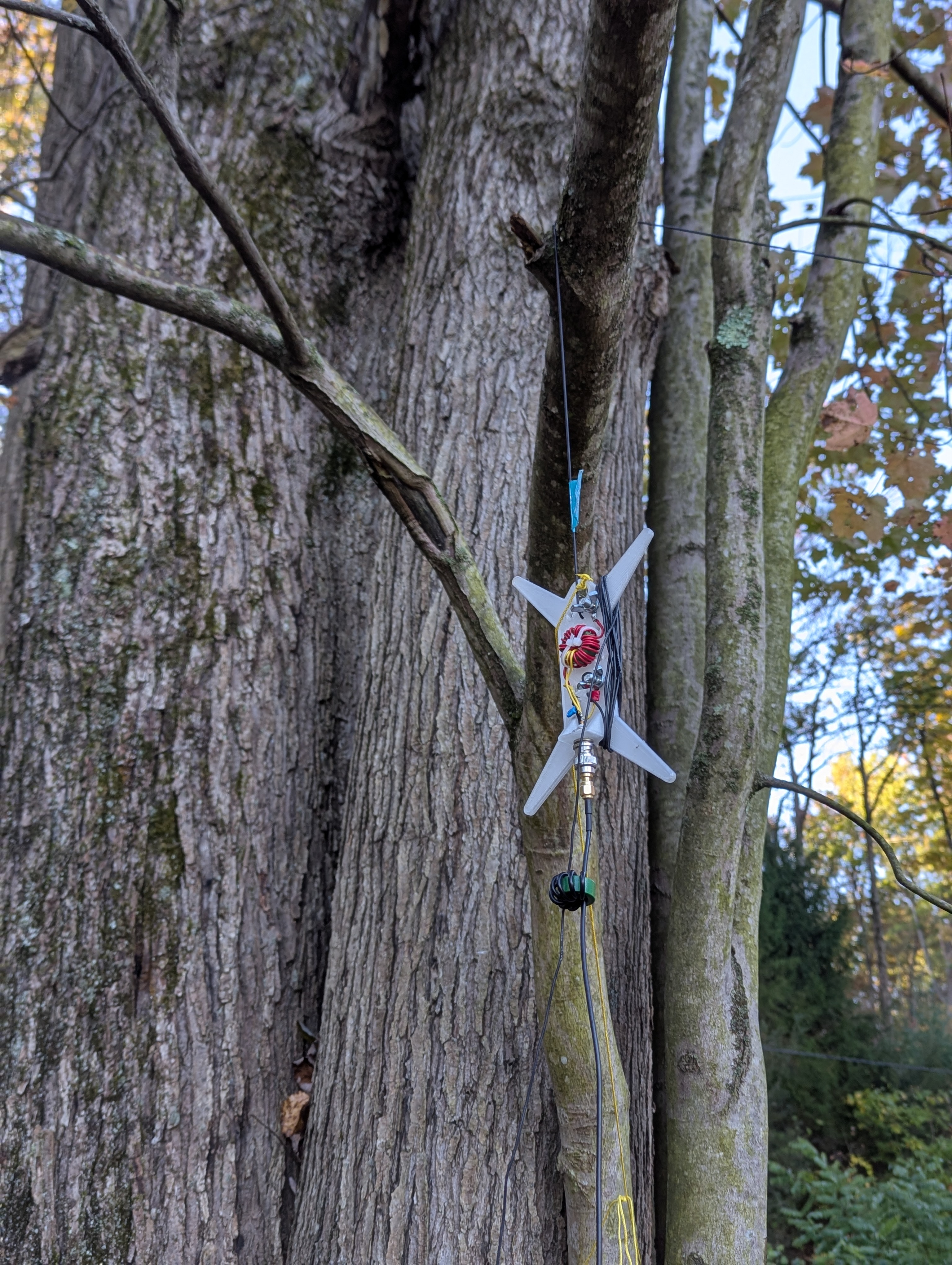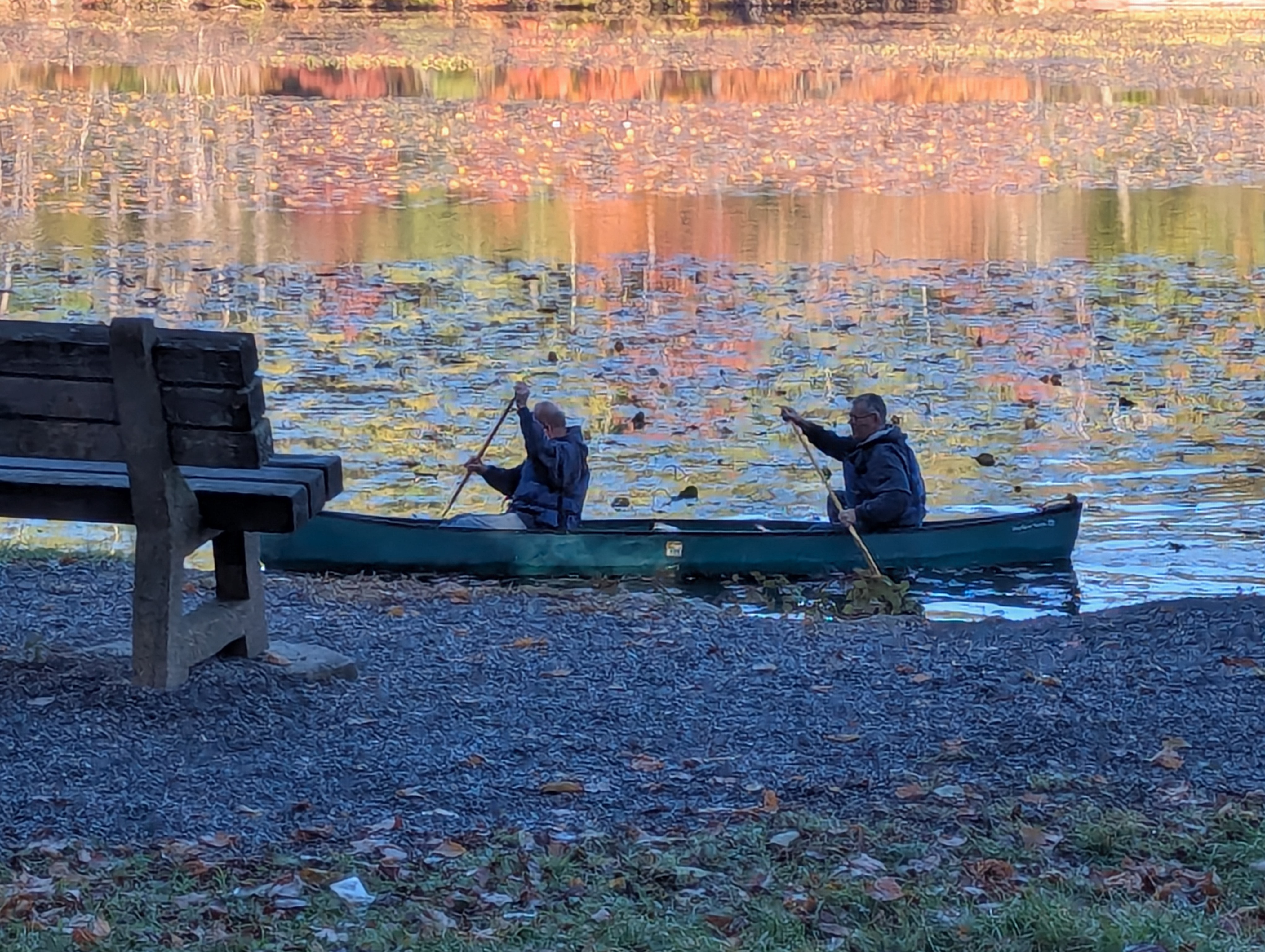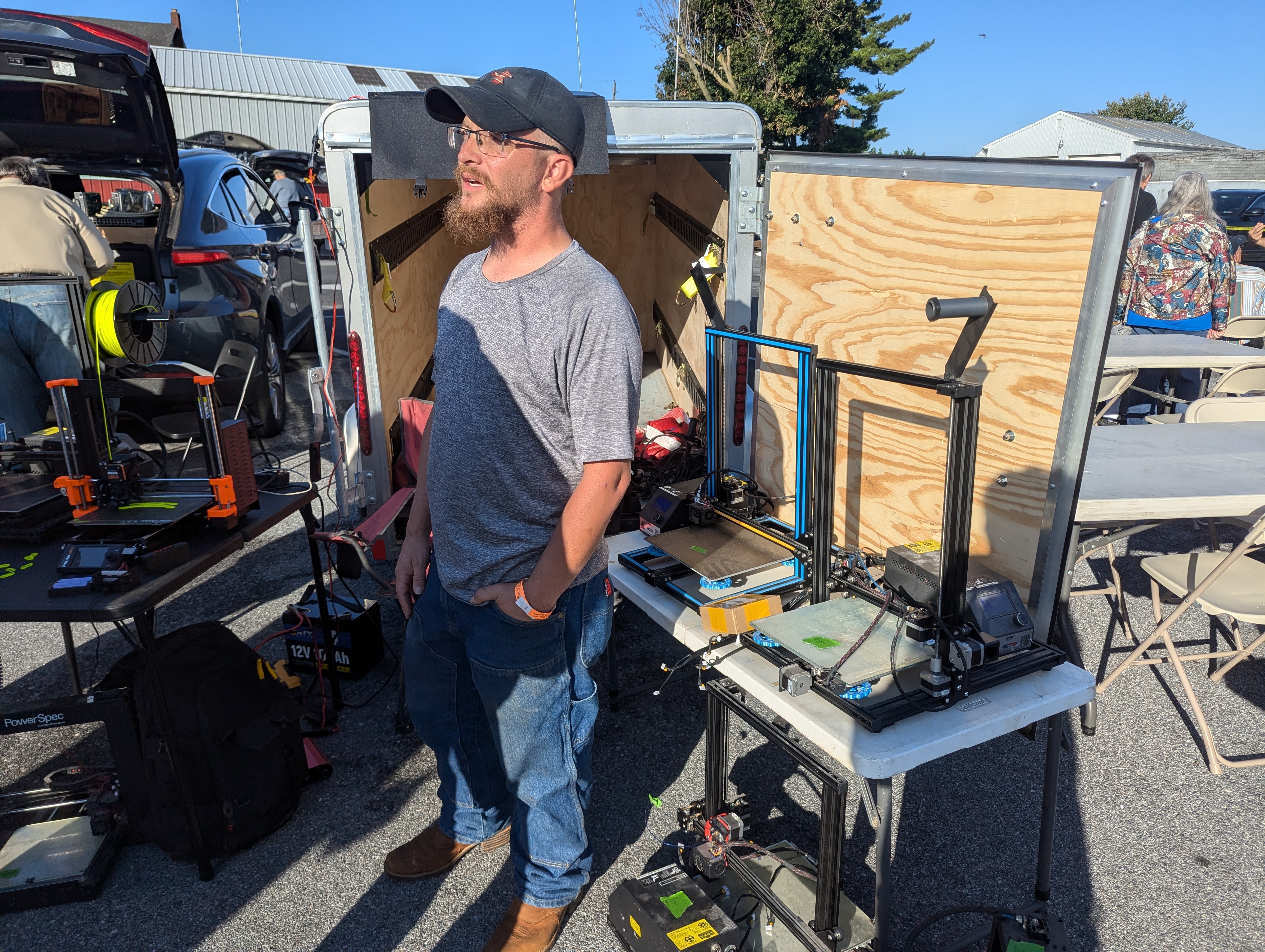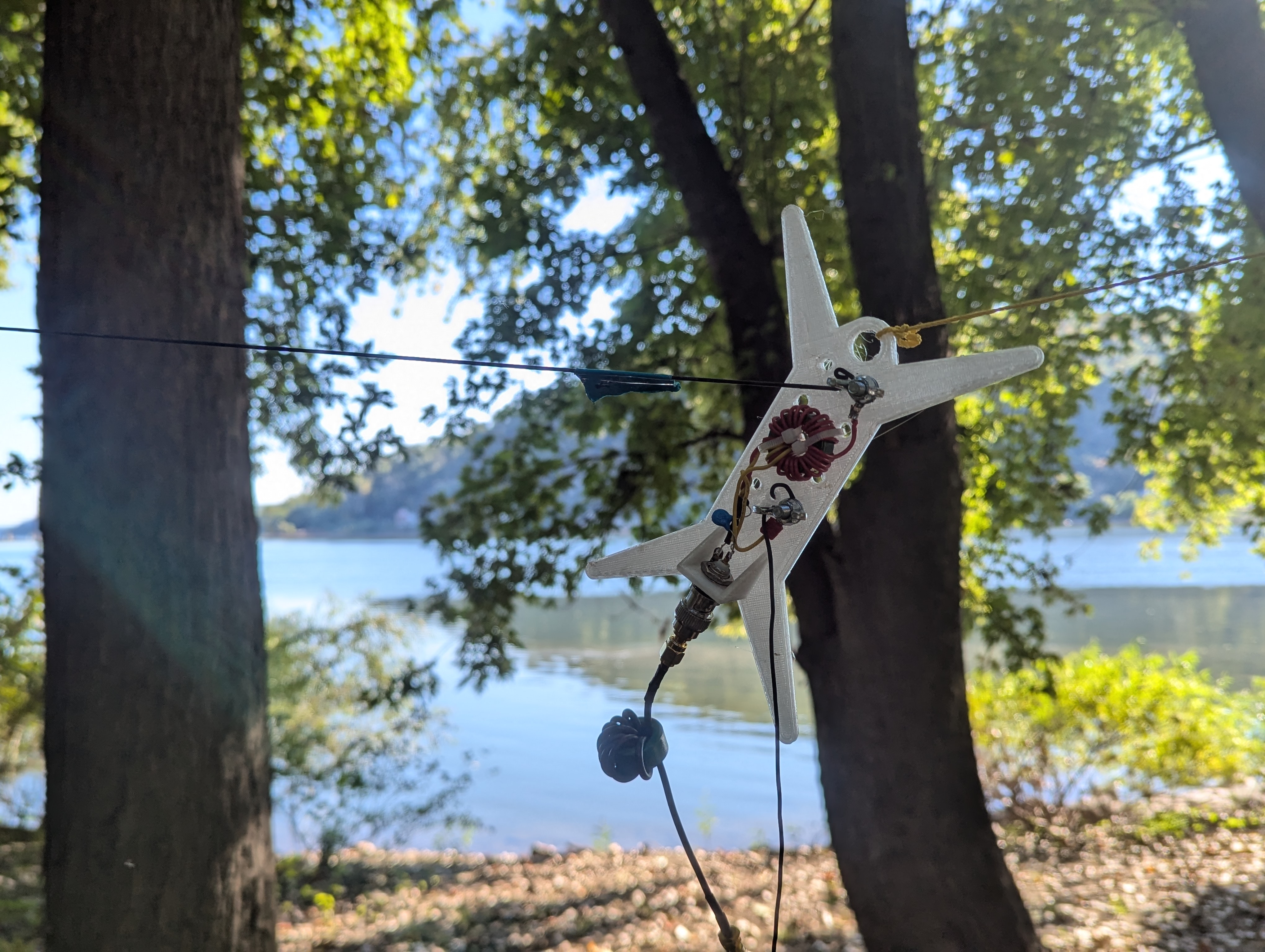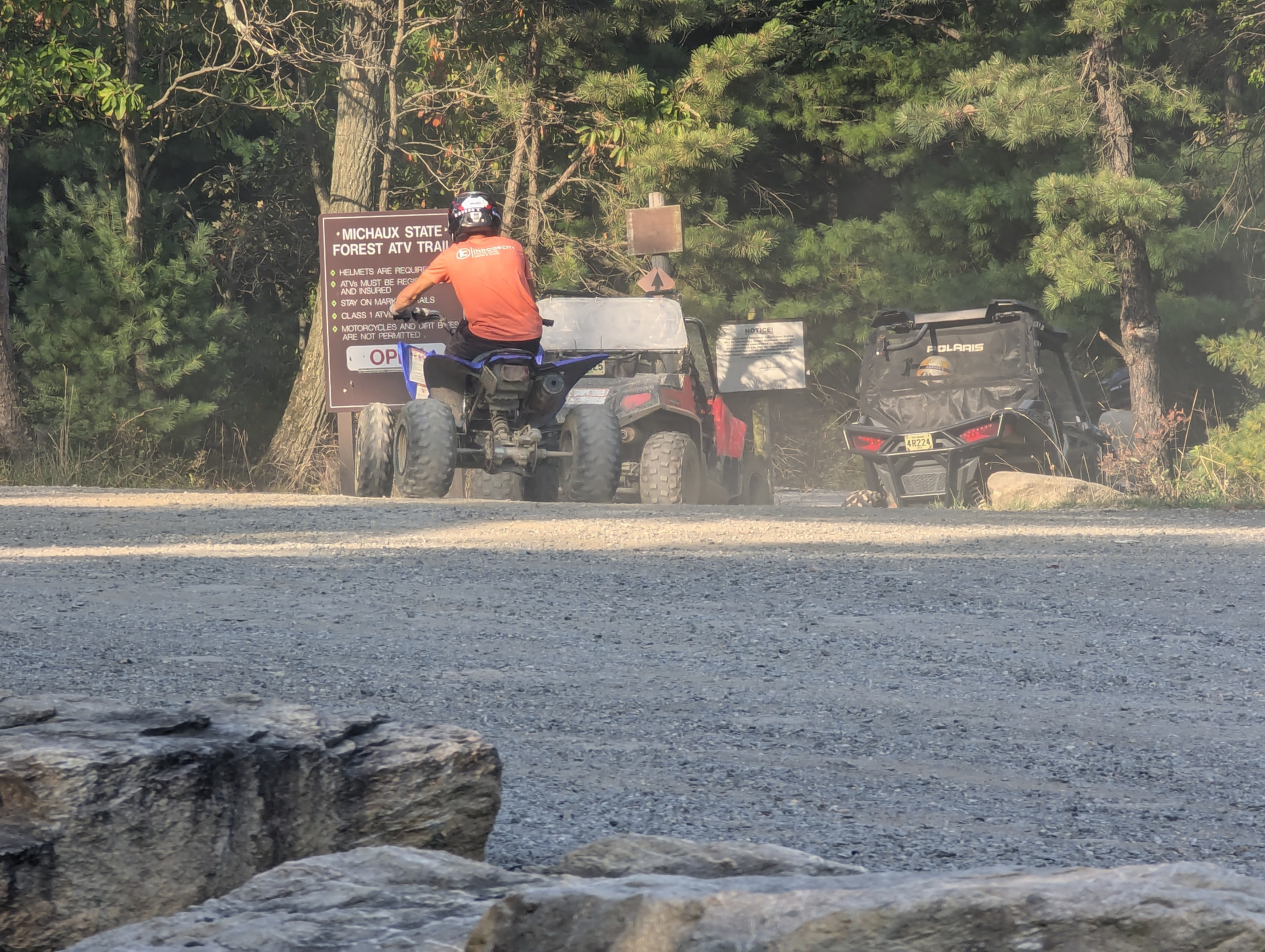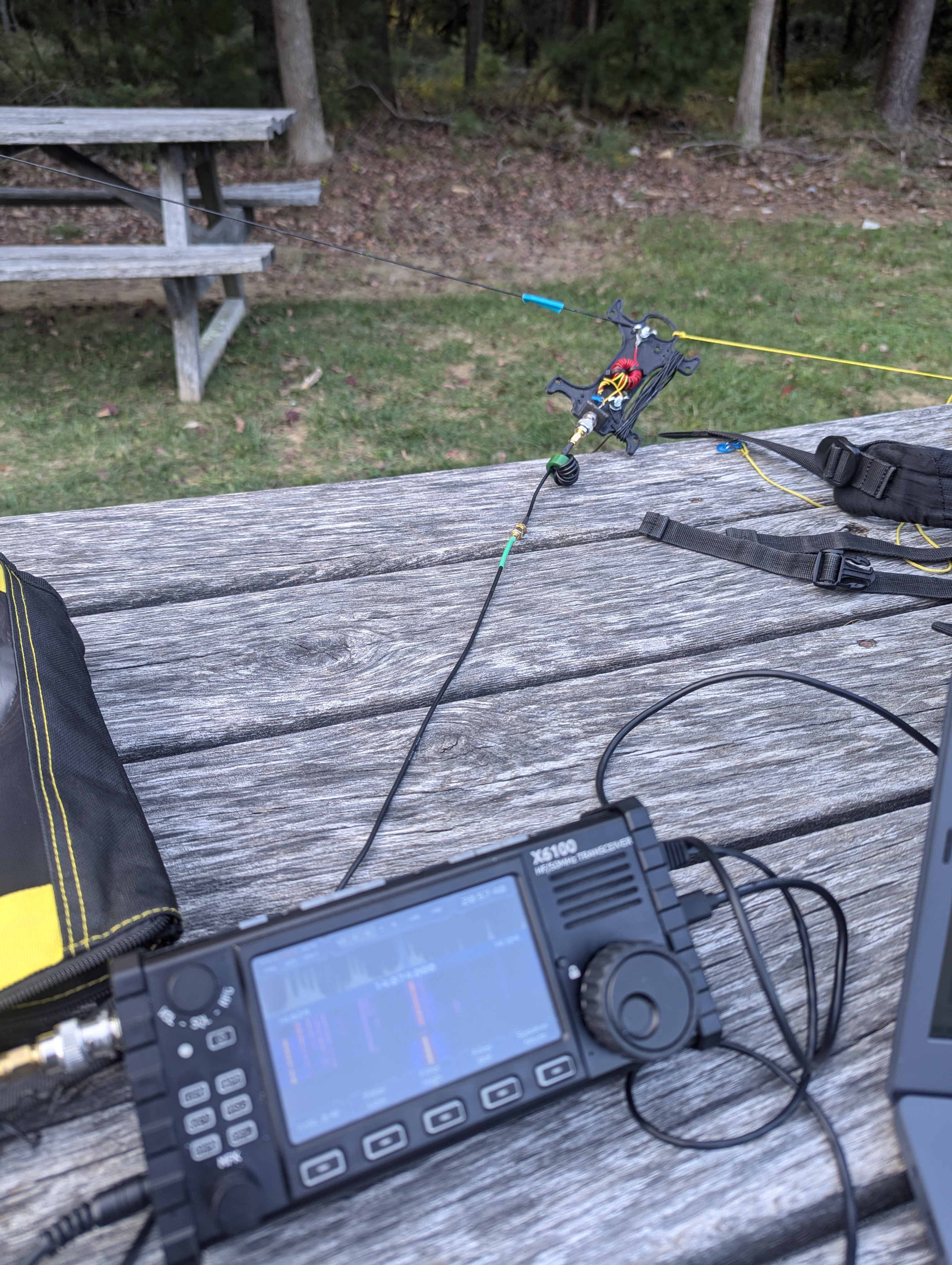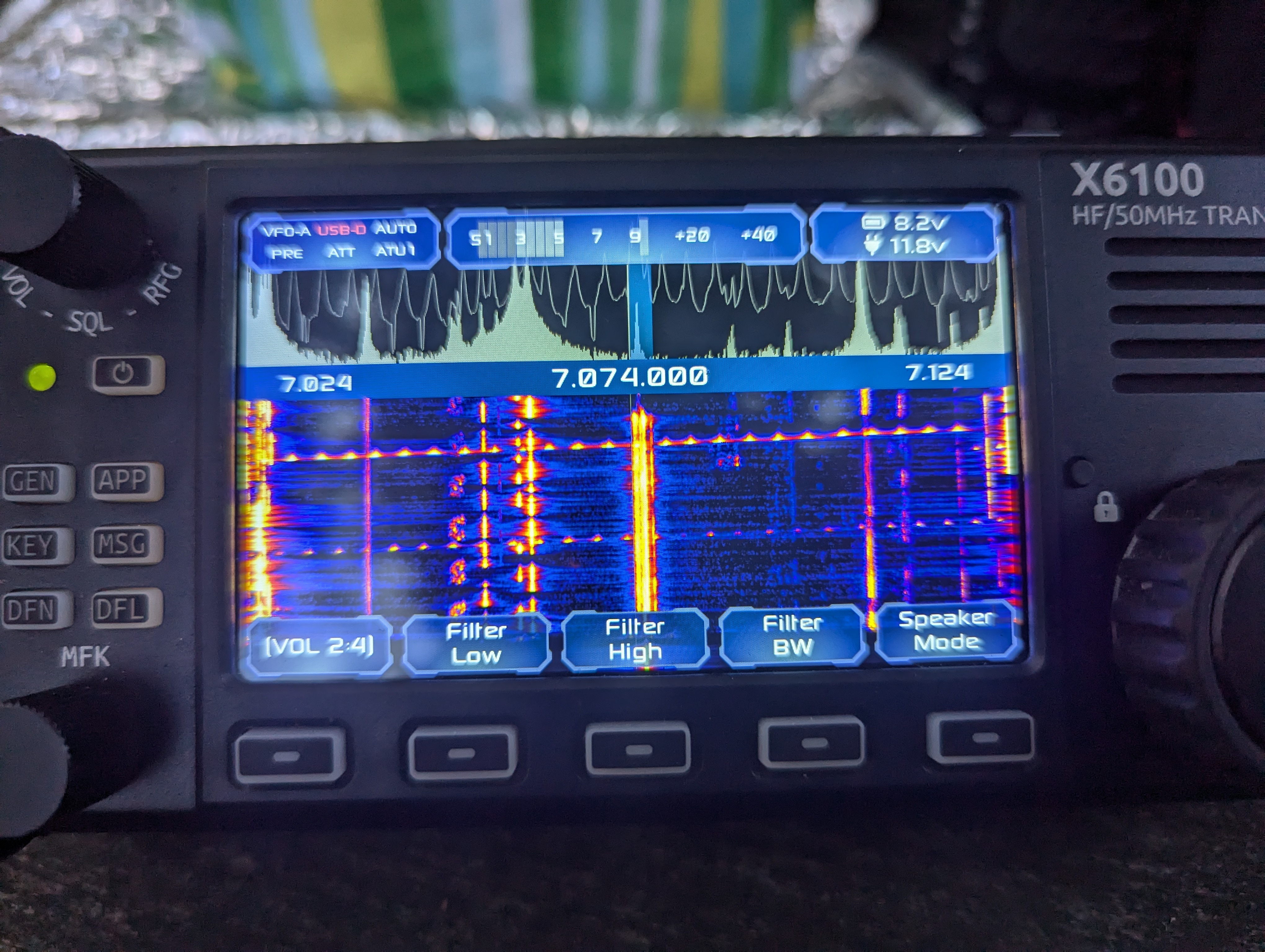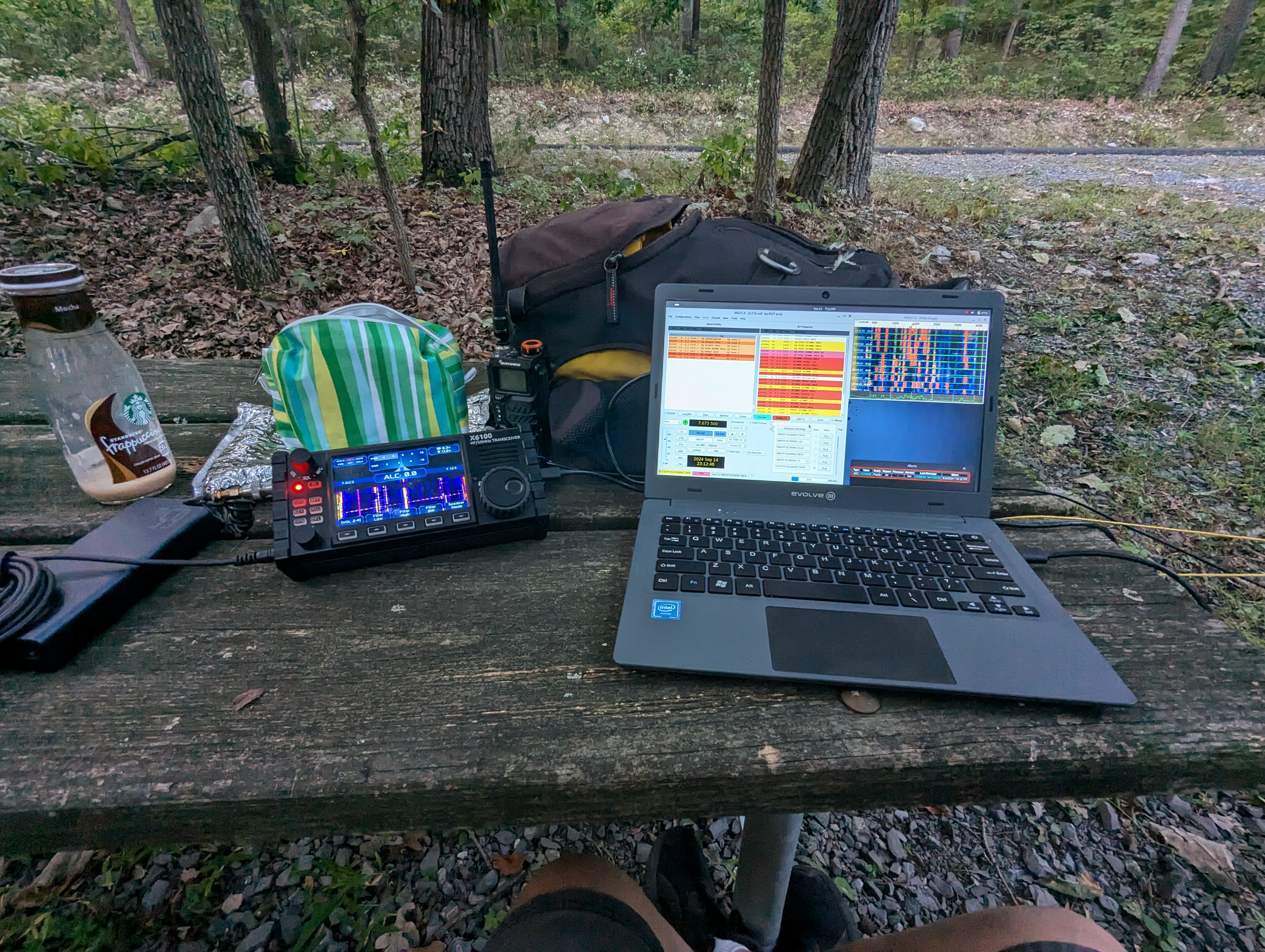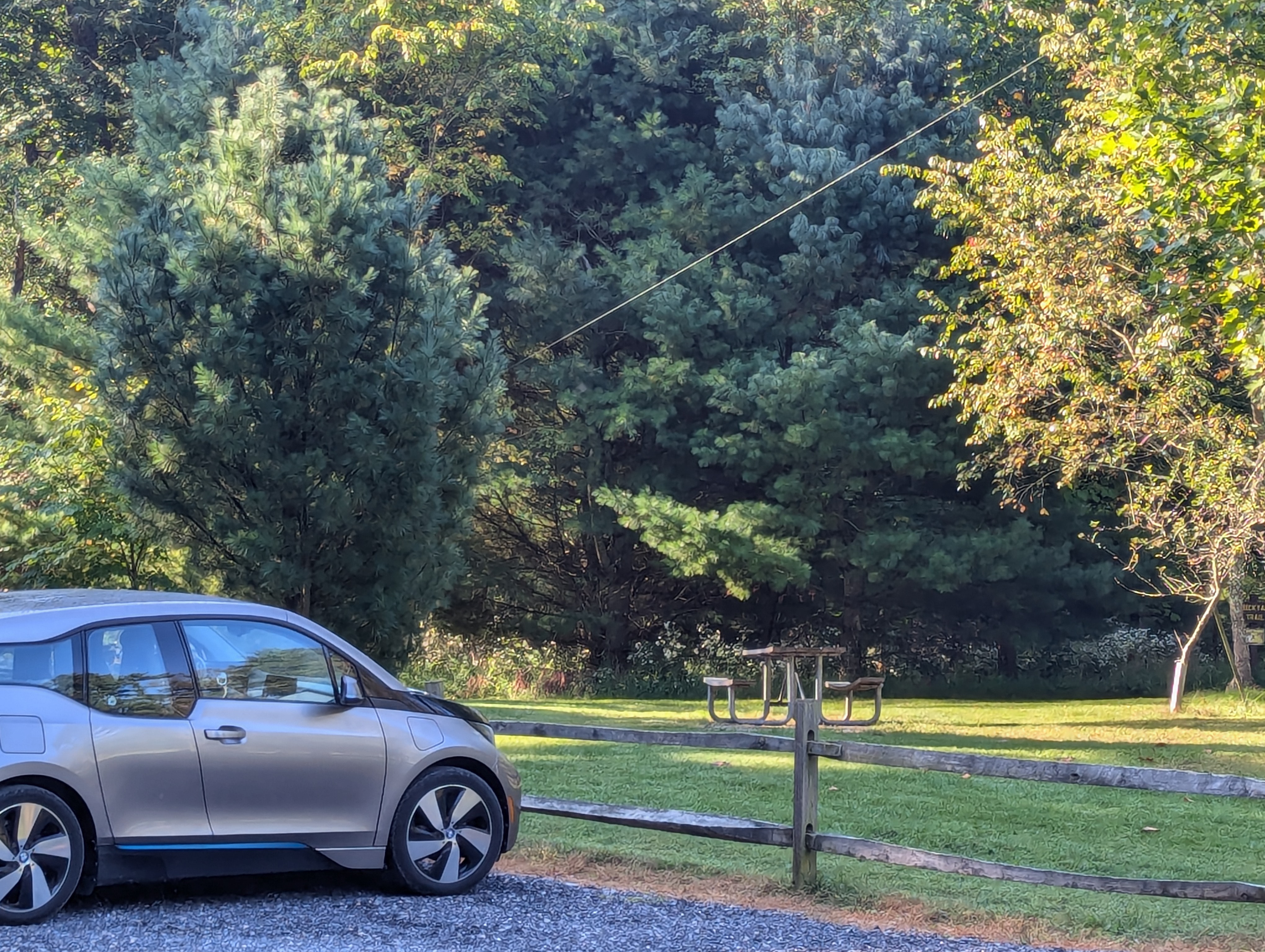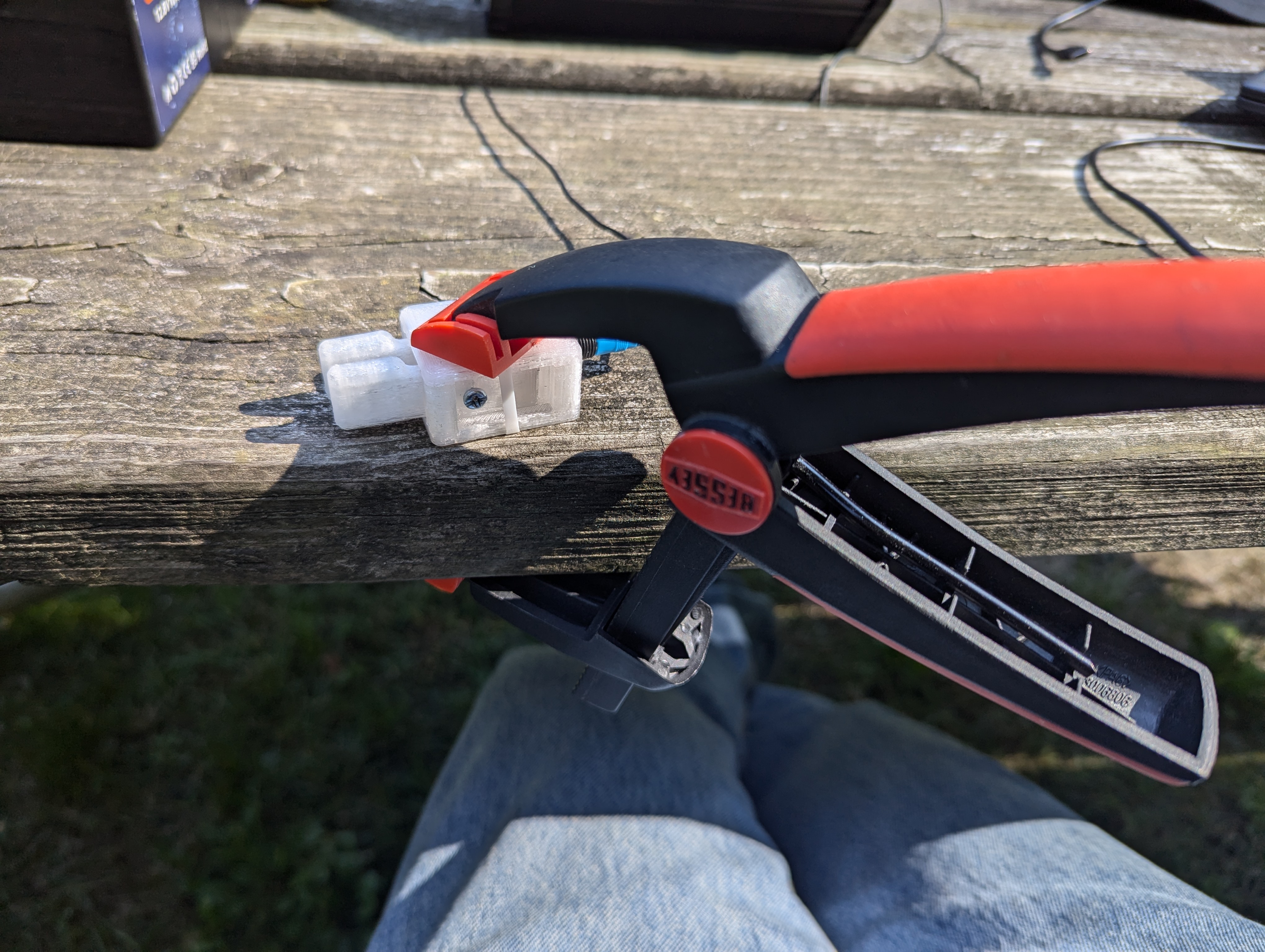I went to Hawaii for the first couple weeks
of November 2024.
I packed up all the POTA radio gear
and headed out to fly to Hawaii.
I carried all my radio gear and big battery
in my carry-on backpack.
I added a few repeaters,
and scanned 2M, but didn’t hear anyone
on my UV-K6.
I started out operating FT8 at the resort
with the EFRW (12.5M) strung between columns on the patio.
I could reach stations
in Hawaii, Fiji, Australia, New Zealand, Japan, and Oregon
on 10m, 12m, 17m, and 20m.
I had to turn up to 8W to get heard.
For parks,
I operated 6 parks and 2 trails
across 2 islands:
beaches, lava fields, and volcanos.
On 2024-11-04,
I activated
US-0753, Pu’uhonua o Honaunau National Historical Park,
with the EFHW for 40m strung across trees
in the picnic area near the rocky coast.
I accidentally split the day,
since I wasn’t familiar with the timezone offset.
Fortunately,
I had enough contacts for an activation in each of the 2 days.
Much of the west coast of the big island also counts
as US-4565, Ala Kahakai National Historic Trail.
On 2024-11-08,
I activated
US-0037, Hawaii Volcanoes National Park,
with EFHW stretched
from a shelter and picnic table
to a nearby tree on West Rim Road
in the park.
I struggled for a bit
from my start at 10am.
Conditions got better near 2pm local time,
and I finished up my activation
while having lunch with Emily.
On 2024-11-10
I went to
US-2214, Kekaha Kai State Park,
after running around a bit to find a spot.
I wanted to work fast,
and there were no trees
in the vast lava field,
so I deployed the whip and coil
bungied to the fishing pole
and the grill of the car.
That activation went pretty fast.
On 2024-11-13,
I visited
US-0739, Kaloko-Honokohau National Historical Park,
which is also
US-4565, Ala Kahakai National Historic Trail.
It had closed an earlier day,
so I couldn’t activate that day.
It was good,
because I hiked the mile or so
to setup on the beach
and toss the counterpoise
for the vertical whip
into the ocean.
On 2024-11-16,
I walked across Waikiki to
US-10923, Artillery District of Honolulu Historic Site.
It was pretty early morning and slow.
I strung the shorter EFRW (12.5M)
from a table to a tree in an inverted V.
I chatted a while with another traveling ham,
and I didn’t manage to complete my activation.
I ran out of time,
and packed up.
My last activation was on 2024-11-17,
at
US-6425, Diamond Head State Preserve,
I setup at a picnic table
near the hiking trail,
US-10913, Diamond Head Summit State Trail.
The whole park is in the caldera
of the volcano.
The EFHW stretched from table
to a tree.
The antenna wire disconnected
from the transformer,
but it was close,
so it received OK,
but trying to transmit showed a high SWR
where the antenna would never usually.
It was super-windy
as the sun set early
over the mountain surrounding me.
